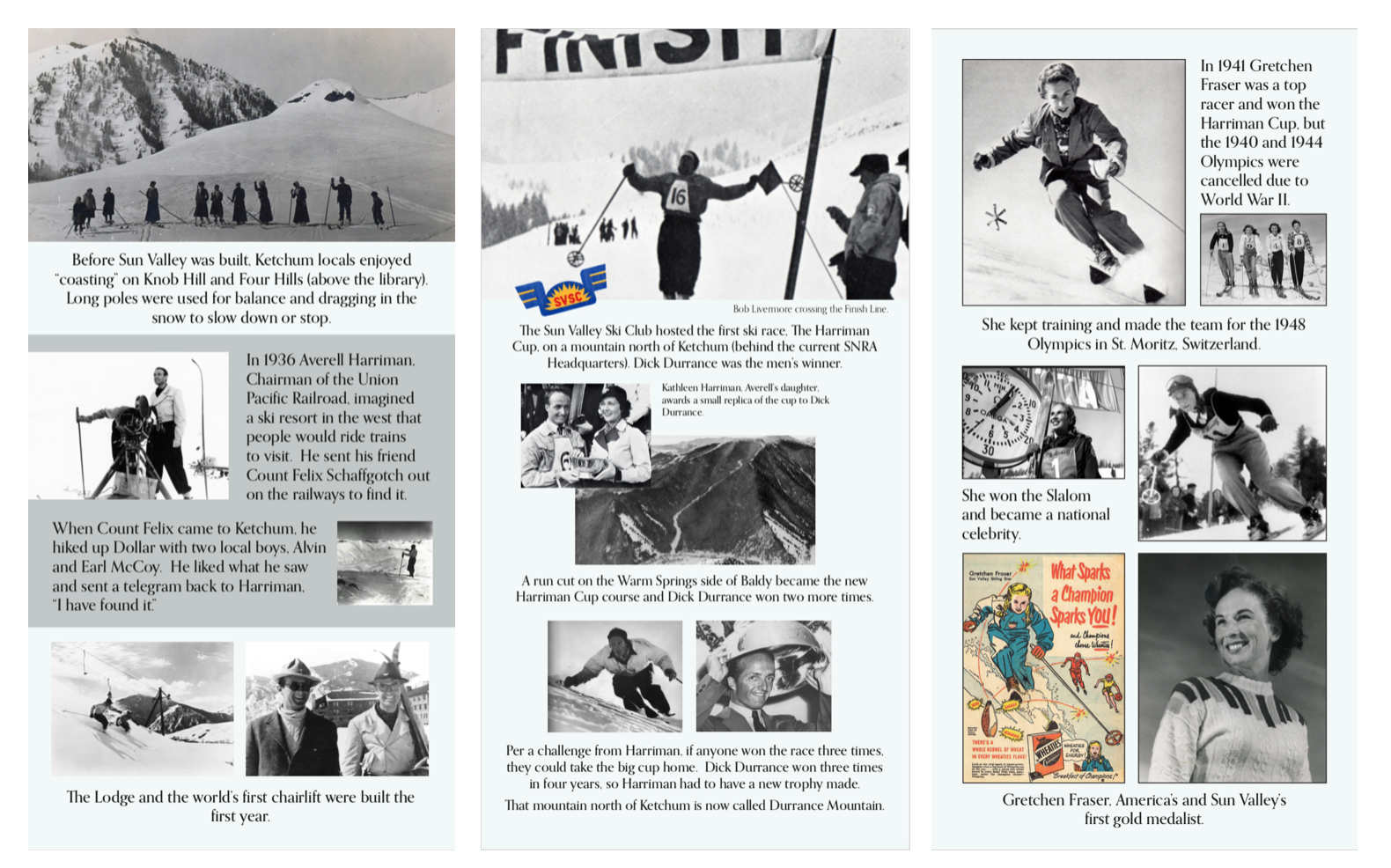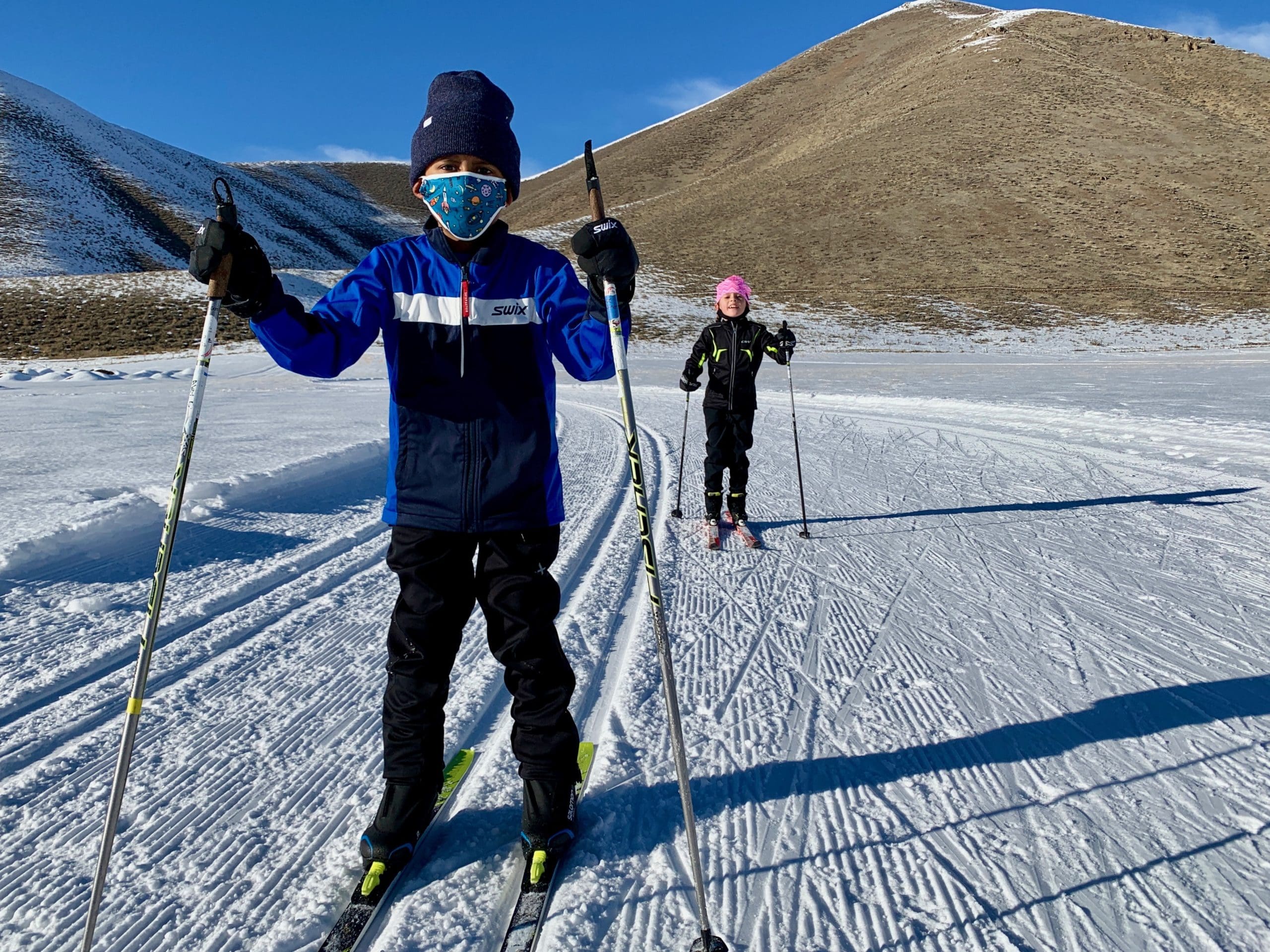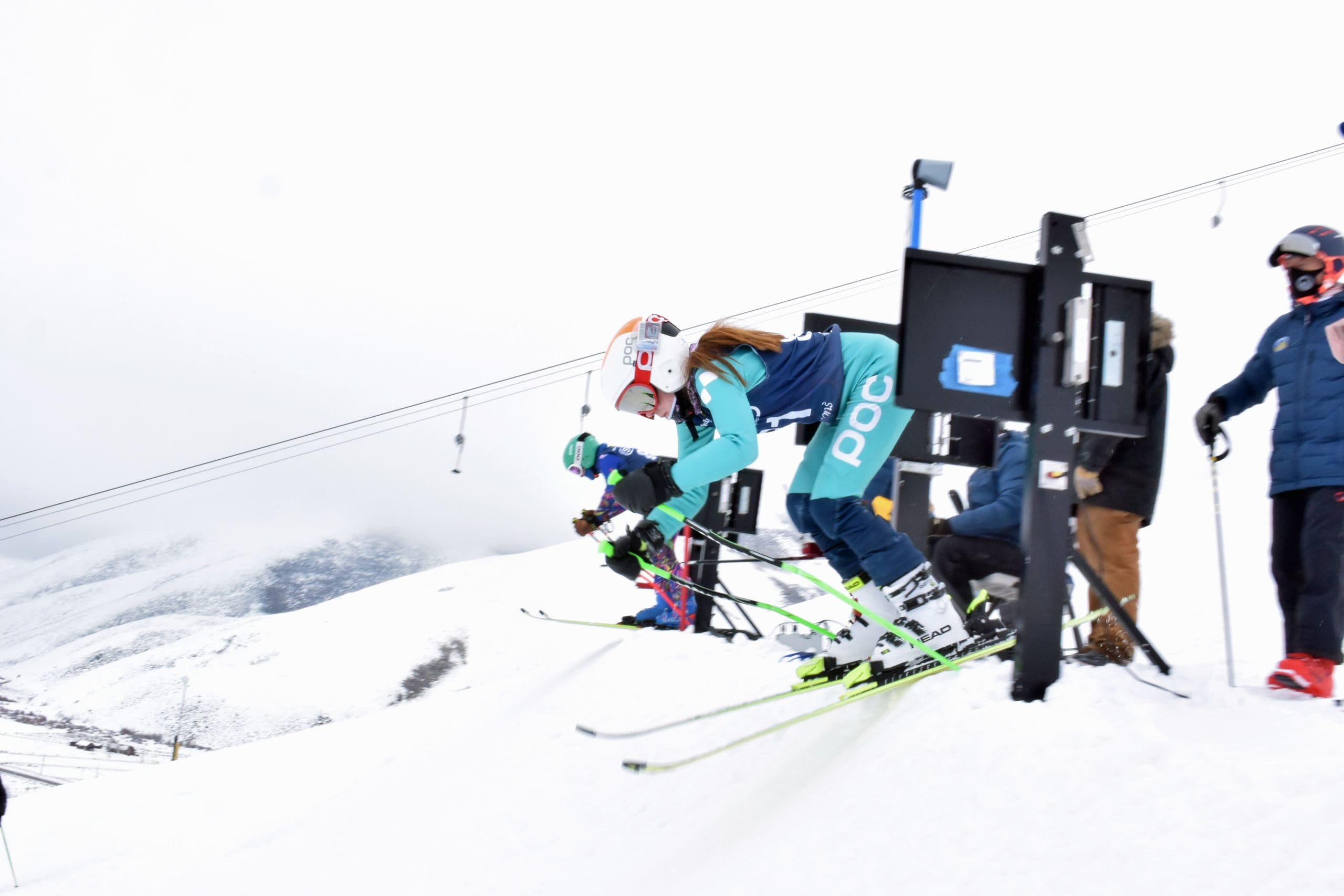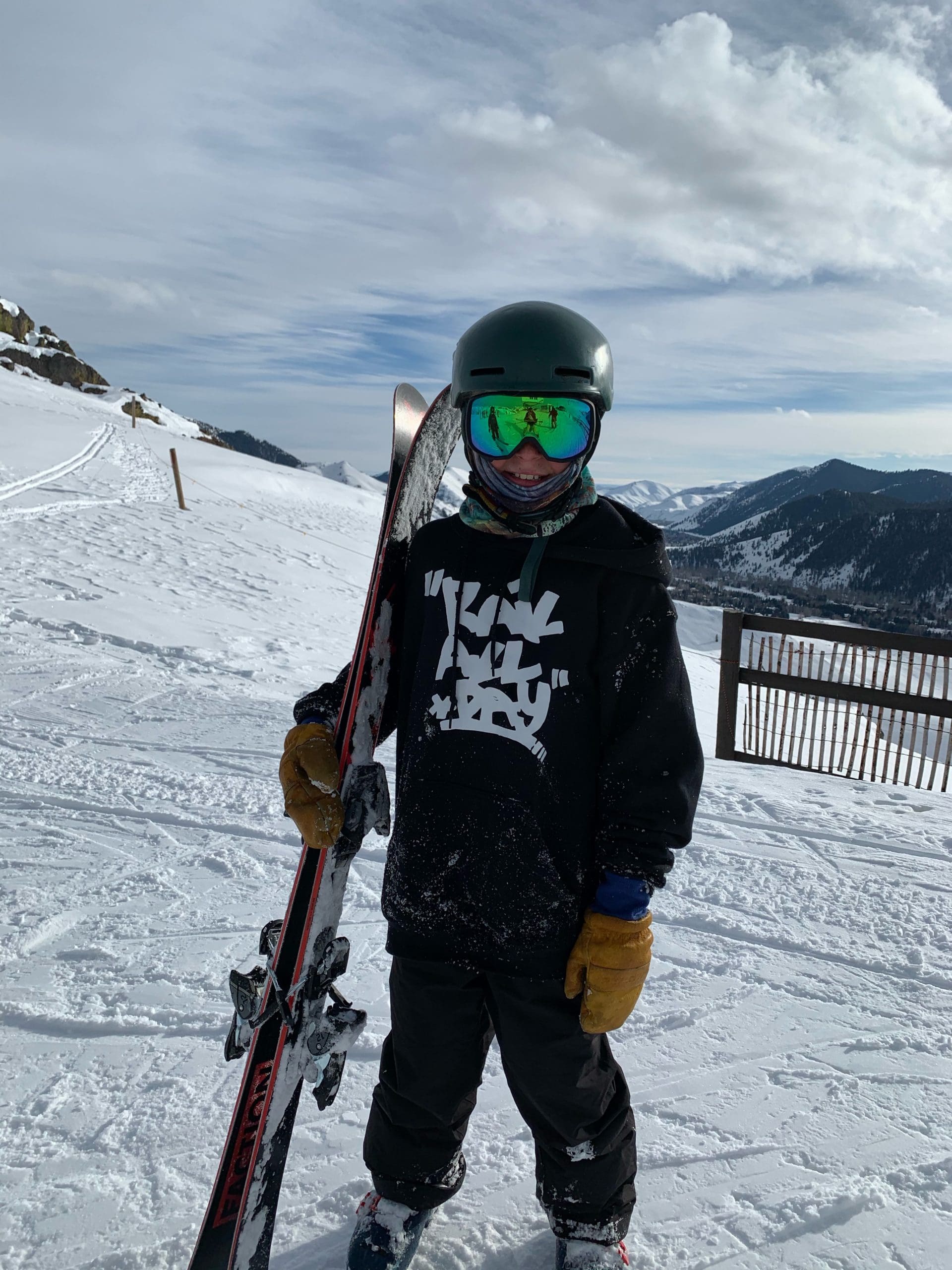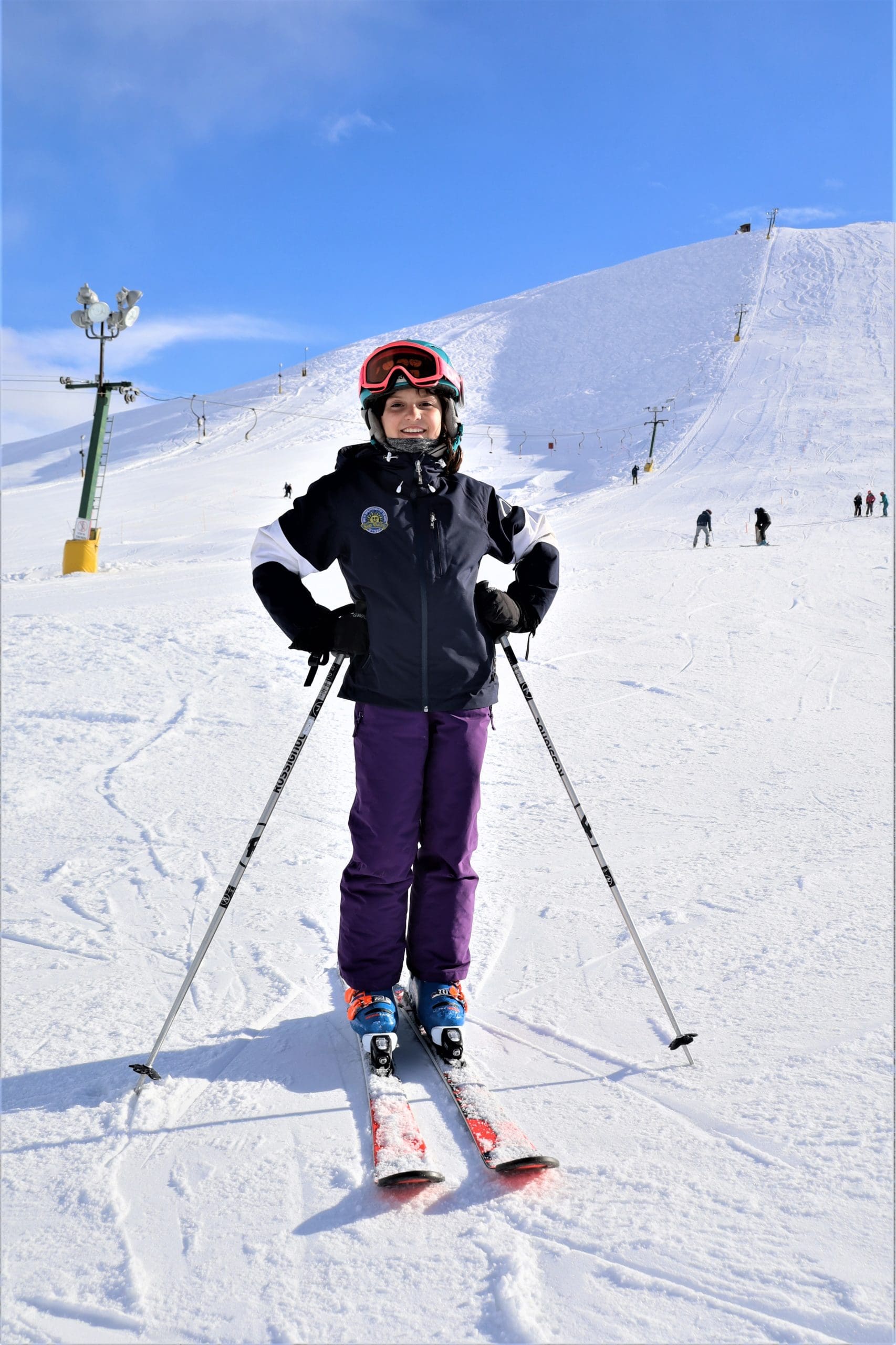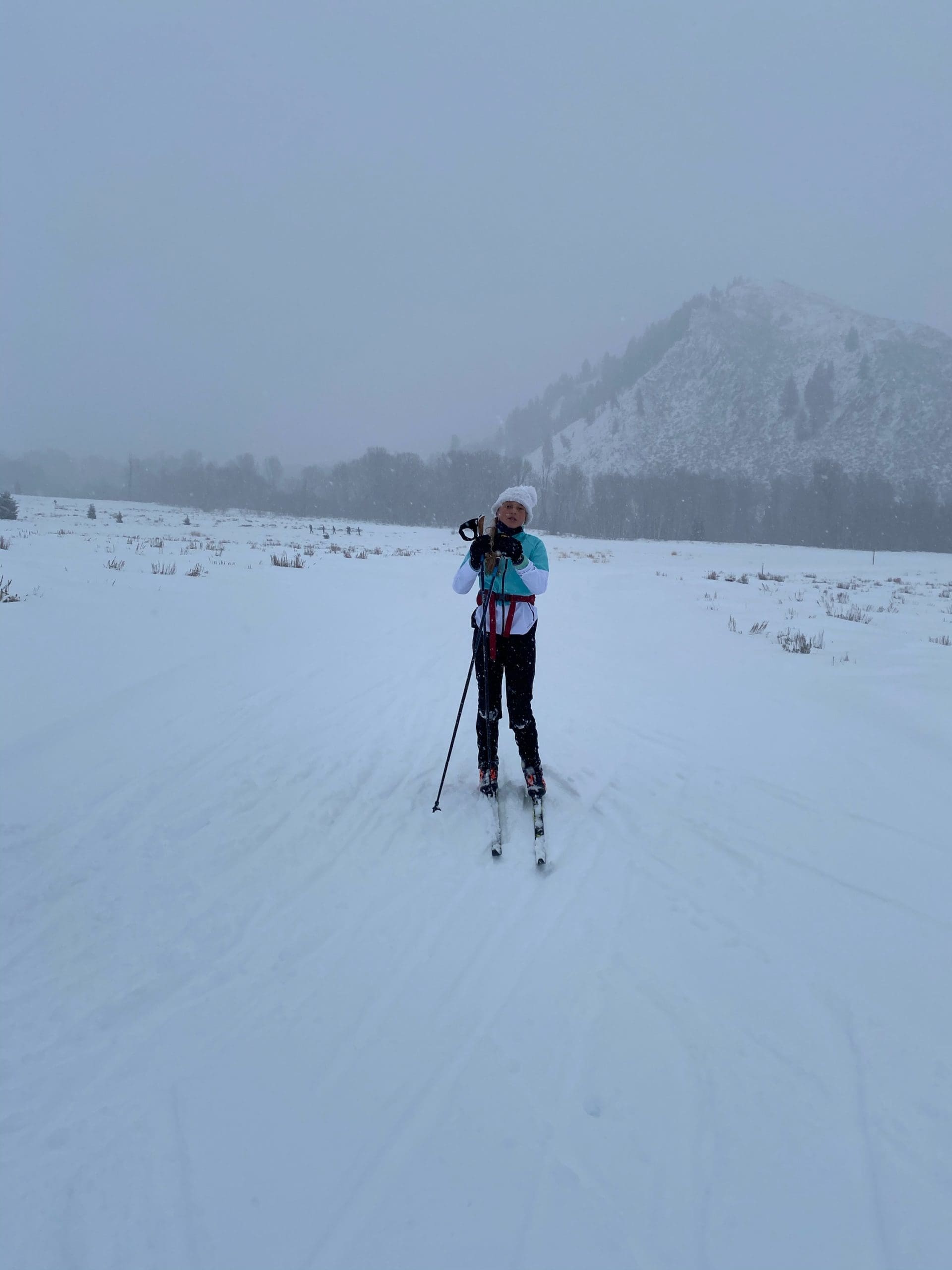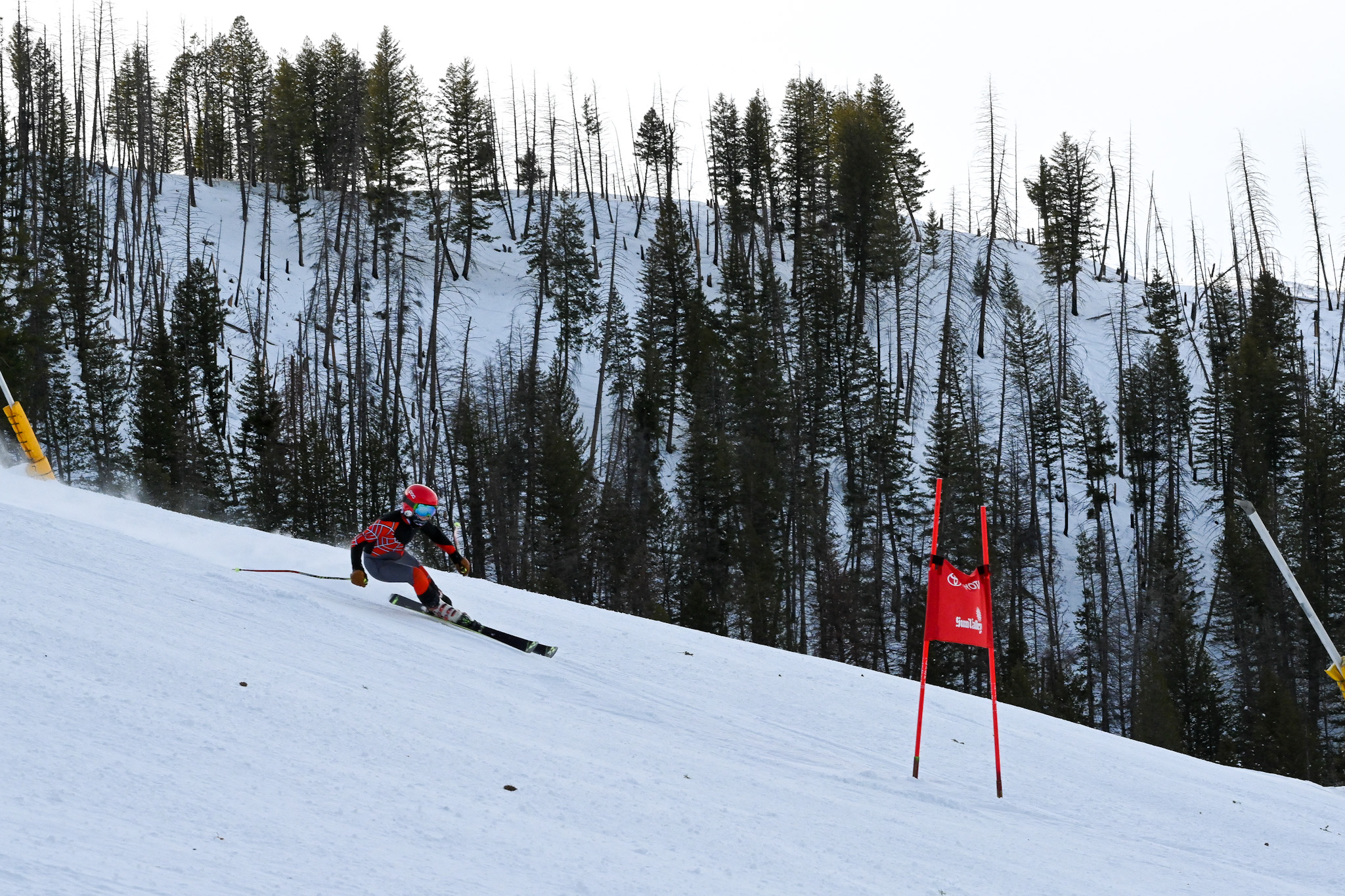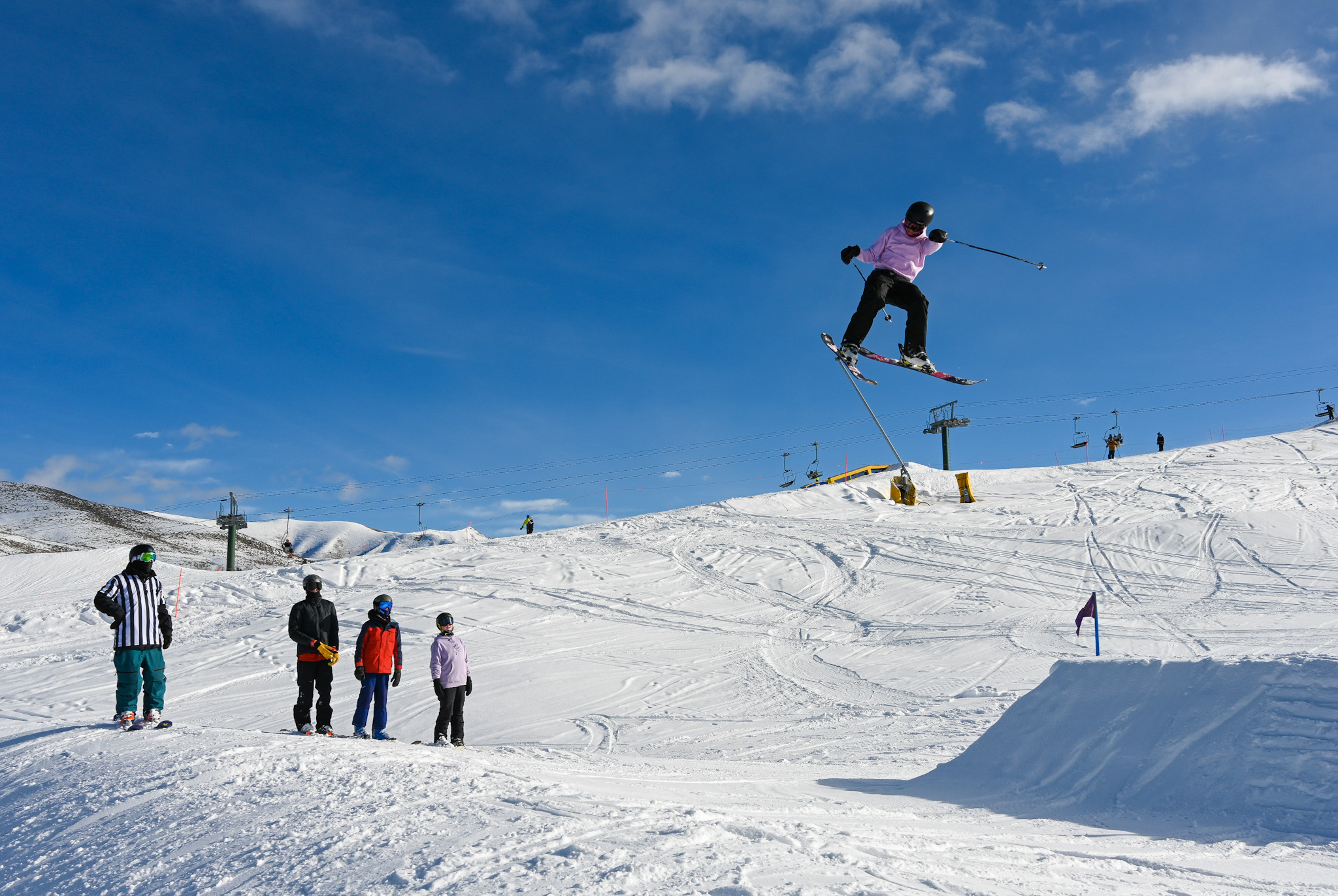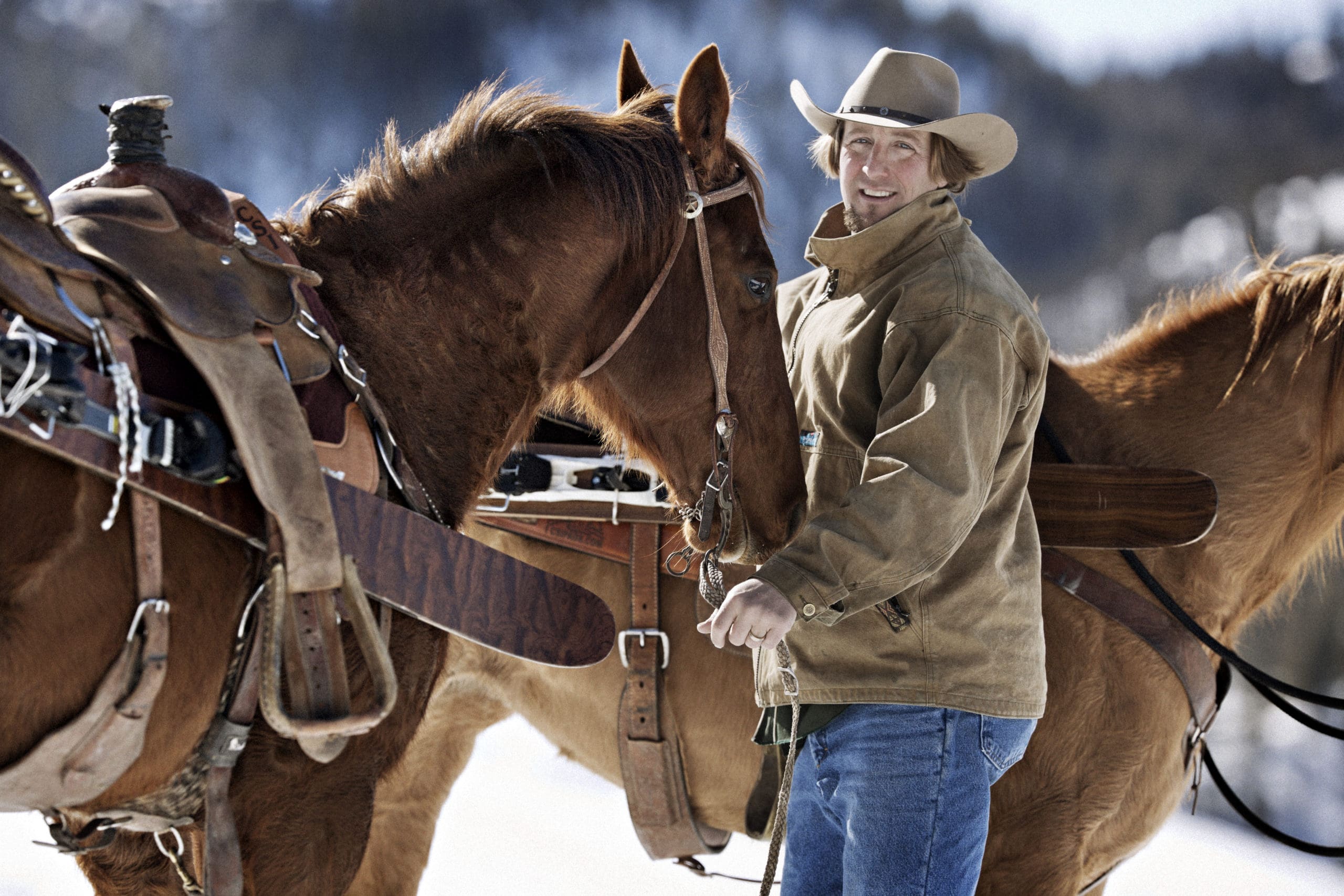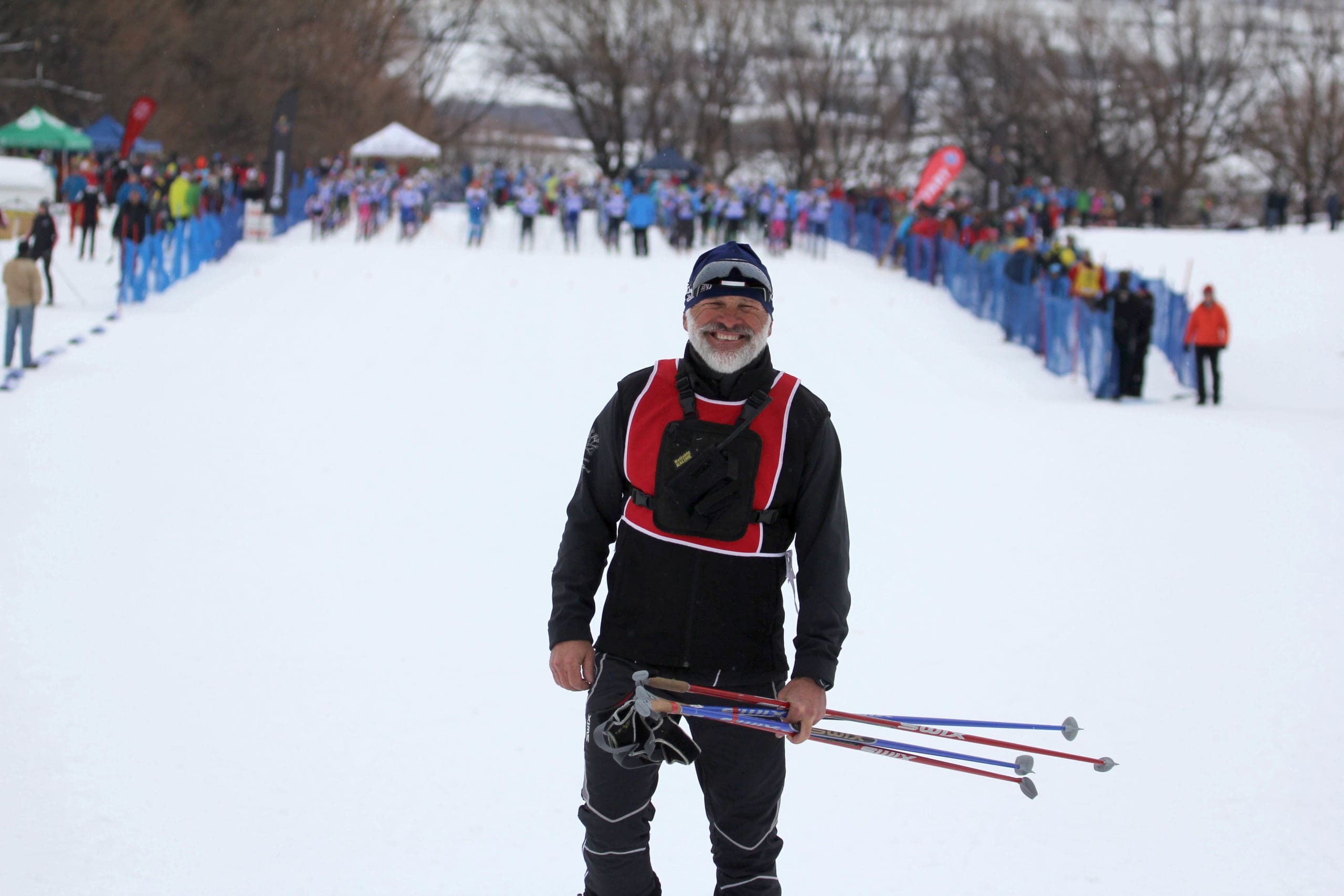A shared legacy: bringing Sun Valley ski history to our athletes
A shared legacy: bringing Sun Valley ski history to our athletes
In the last month, the SVSEF administrative team installed 16 canvas panels inside our yurt at the base of Greyhawk. From the world’s first chairlift on Ruud mountain, to our current athletic stars competing professionally, the panels tell the history of the Sun Valley Ski Education Foundation, Sun Valley Ski Club, and skiing in Sun Valley.
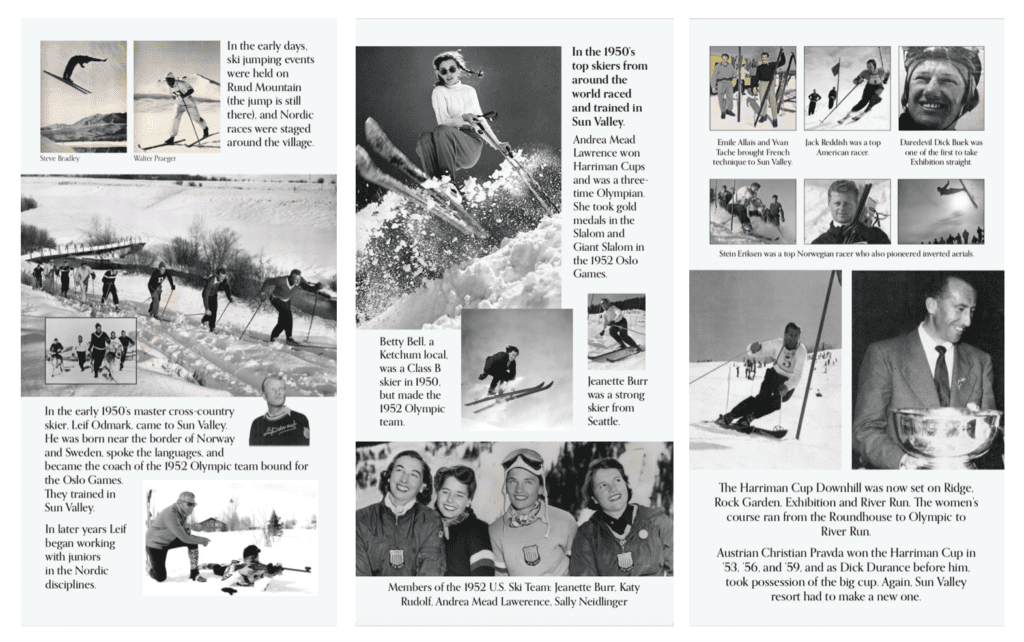
“The goal is to give the kids a sense of time and place within Sun Valley ski history, and within Sun Valley Ski Education Foundation history.” David Butterfield explains. Executive Director Scott McGrew recruited Butterfield and Heidi Schernthanner to help compile and organize a timeline of historical highlights from this valley’s lengthy and rich ski history. The final product is this: 16 two-foot by four-foot canvas panels depicting photos and facts from 85 years of Sun Valley skiing history.
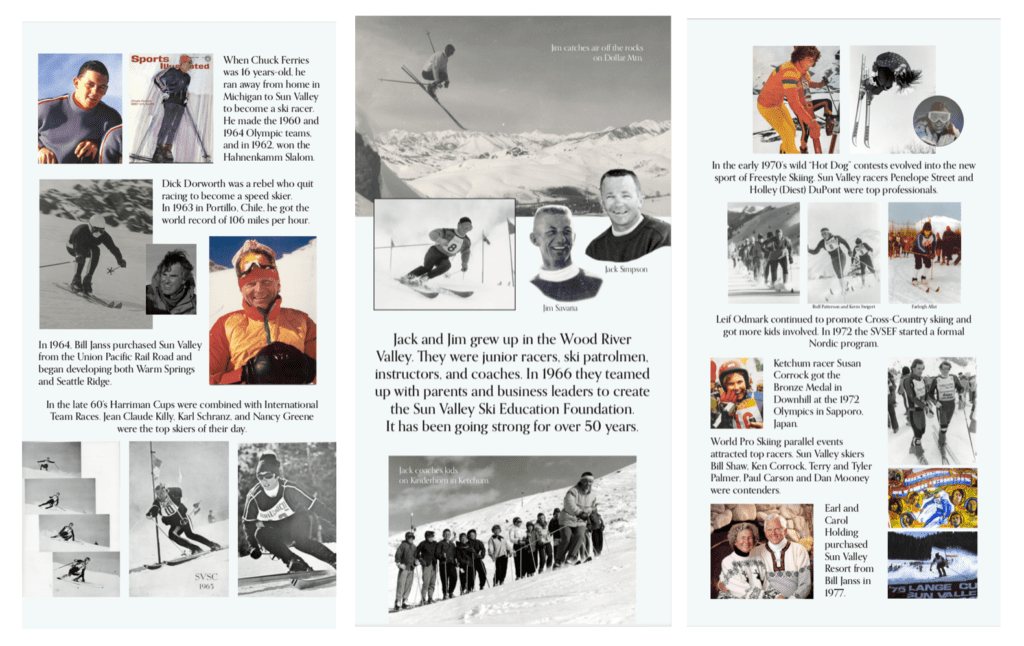
The panels reach back to the days before Union Pacific Railroad’s “Sun Valley,” when Ketchum-ites “coasted” around Knob Hill and Four Hills (above the Community Library). The panels then move through the history of Averell Harriman of Union Pacific Railroad, the building of Sun Valley lodge, and the world’s first chairlift; they also depict the history of the Sun Valley Ski Club, the Harriman Cup, the dawn of the valley’s cross-country tradition, and the golden athletic era of the 50s and 60s. The timeline then moves on to the founding of Sun Valley Ski Education Foundation in 1966, the introduction of “hot-dogging” in the 1970s (the precursor to freestyle), the introduction of World Pro Ski Tour, the advent of snowboarding, and the athletic success of Sun Valley athletes throughout this time period. The timeline begins to wrap up with the continued success of Sun Valley Ski Team athletes of the 1990s, with the likes of Picabo Street and the Crist brothers. The panels conclude with profiles of our current professional athletes.

“It’s a winter wonderland we get to live in, and a lot of people don’t really think about the history behind that. It’s kind of fun to be part of this project, because it gives back at such a big level. It gives back by sharing the behind-the-scenes of what got us here, to where we are now. The wheels keep going because of what we don’t see moving, which is this aspect of legacy.” Schernthanner shared.
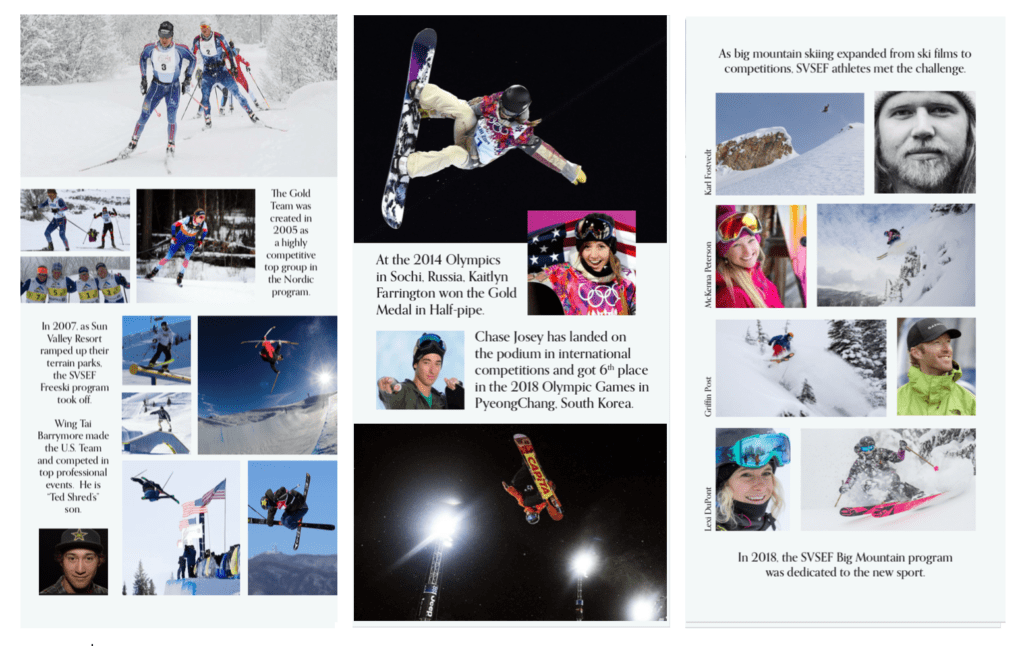
“The kids are standing on the shoulders of everyone and everything that came before them. Obviously, not every kid that sees this history is going to go on to be a legend; however, the ones who do get up on the podium are standing on the shoulders of the other kids with them too.” Butterfield added. While not every athlete can go on to be a future feature on the history panels, every kid has contributed to the continuation of this Sun Valley skiing legacy; with this installation, the athletes get the chance to see exactly how.
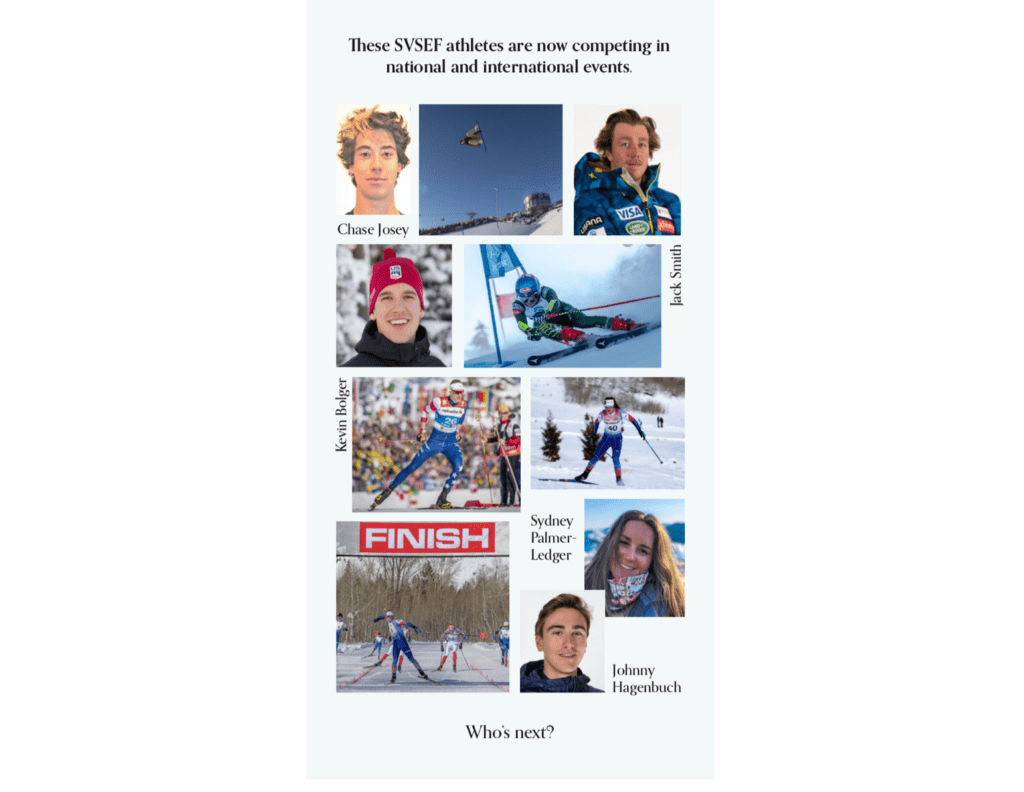
Athletes of the Week
February 20, 2021
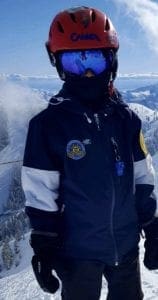
Nakiah Acacia
It's hard to pick just one out of the crew because so many of them are motivated to work so hard on the mountain and in the barn, but this week's Mini Xer AOW is Nakiah Acacia. Nakiah has gotten compliments from every coach who has had him for being coachable and mindful. When an athlete takes your advice and notices a really positive effect, it sort of makes it all worth it as a coach. Nakiah has a technical smooth style from being brought up by racers in the Cascades, and is inspired to get rad off-piste in the Powder. I think we have a future contender on the Big Mountain scene here. - coach Ben Schumacher
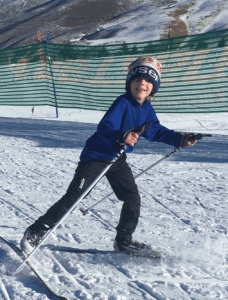
Nina O'Sullivan
Nina arrives at practice with a huge smile and a “Yes, I’d love to!” attitude every day. From rocking the Rip-a-Thon by skiing 30 laps (!) to skiing the 15km Boulder Mountain Tour, Nina makes the most of everyday she is on skis. She is a kind & tenacious 2nd grader, and truly leads her teammates by her own “every-day-I- get-to-ski-is-a-great-day” example. Keep having fun out there, Nina, and thank you for being an AWESOME Devo Skier! - Coach Martha Pendl
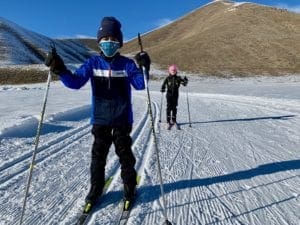
Out of the gate: the 51st Arkoosh Cup
Out of the gate: the 51st Arkoosh Cup
Sunday, February 14th, Rotarun hosted the 51st running of the iconic community event, the Arkoosh Cup. With a field of 150 skiers and riders, the chill of the overcast February day was offset by the excitement of the athletes.
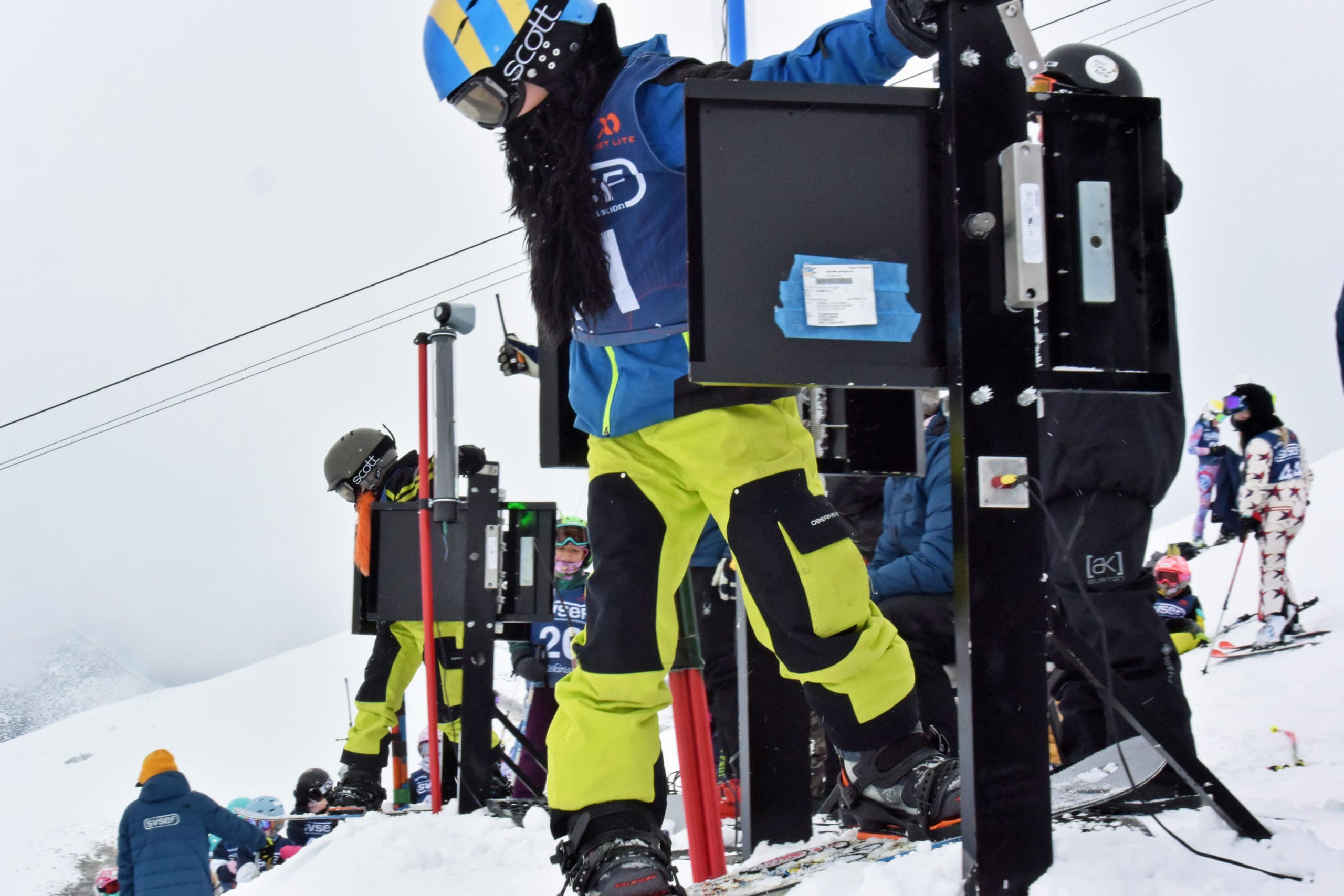
The day was split in half, with alpine girls and all snowboarders running in the morning, and alpine boys running in the afternoon. From pole-less U6 athletes that needed a little push to get out of the start, to U12 athletes tagging gates as they cut down the line, the race was an opportunity for skiers and riders of every level to put their skills to the test.
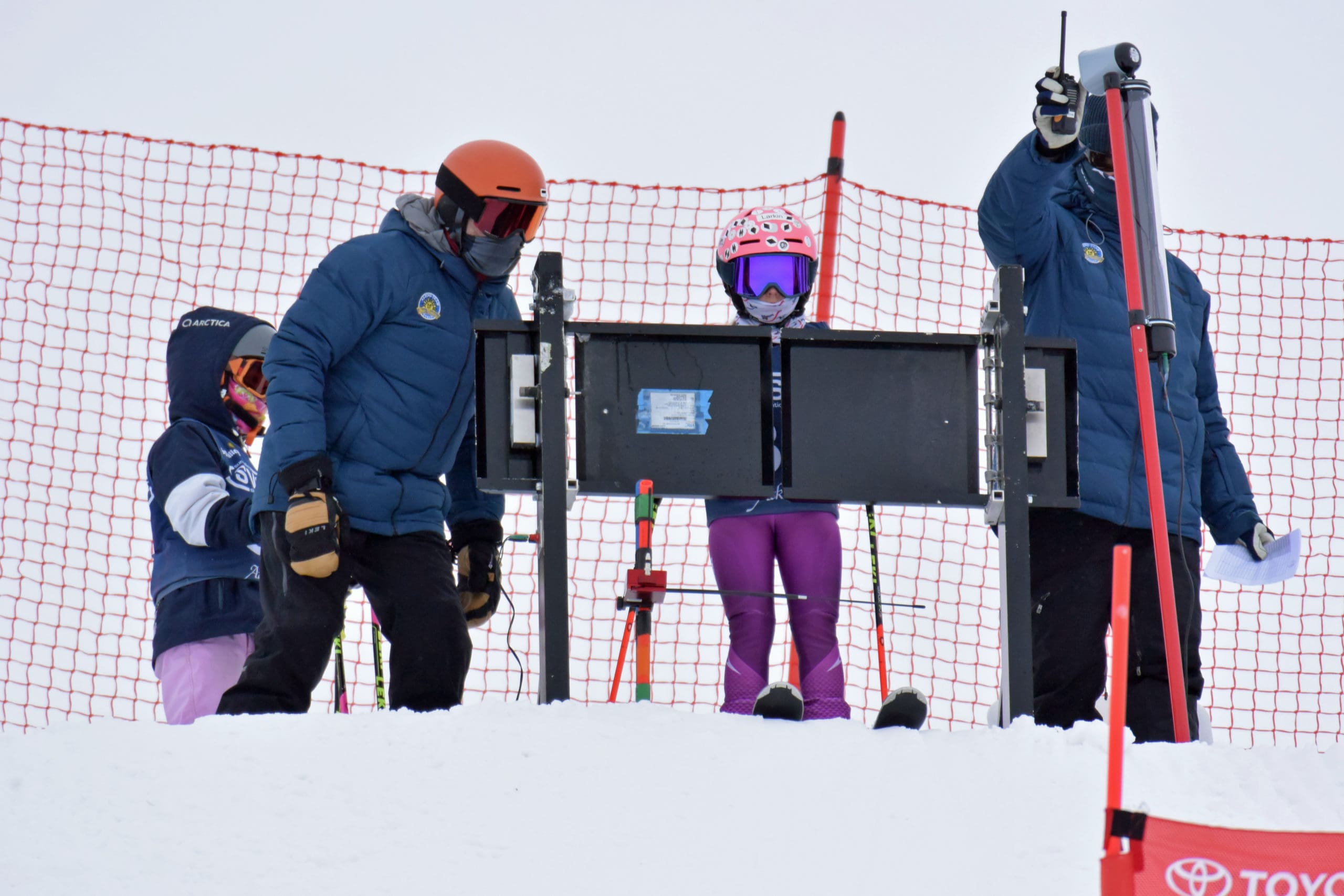
However, this year’s running of dual-format Arkoosh included a distinct feature from years past: pro-tour style starting gates, donated by the Bob Beattie Ski Foundation. The racehorse-style gates work as follows: once each athlete is in the gate and both courses declared ready, a light display to the immediate right of the gate begins to count athletes down. On ‘Go,’ the gates shoot open.
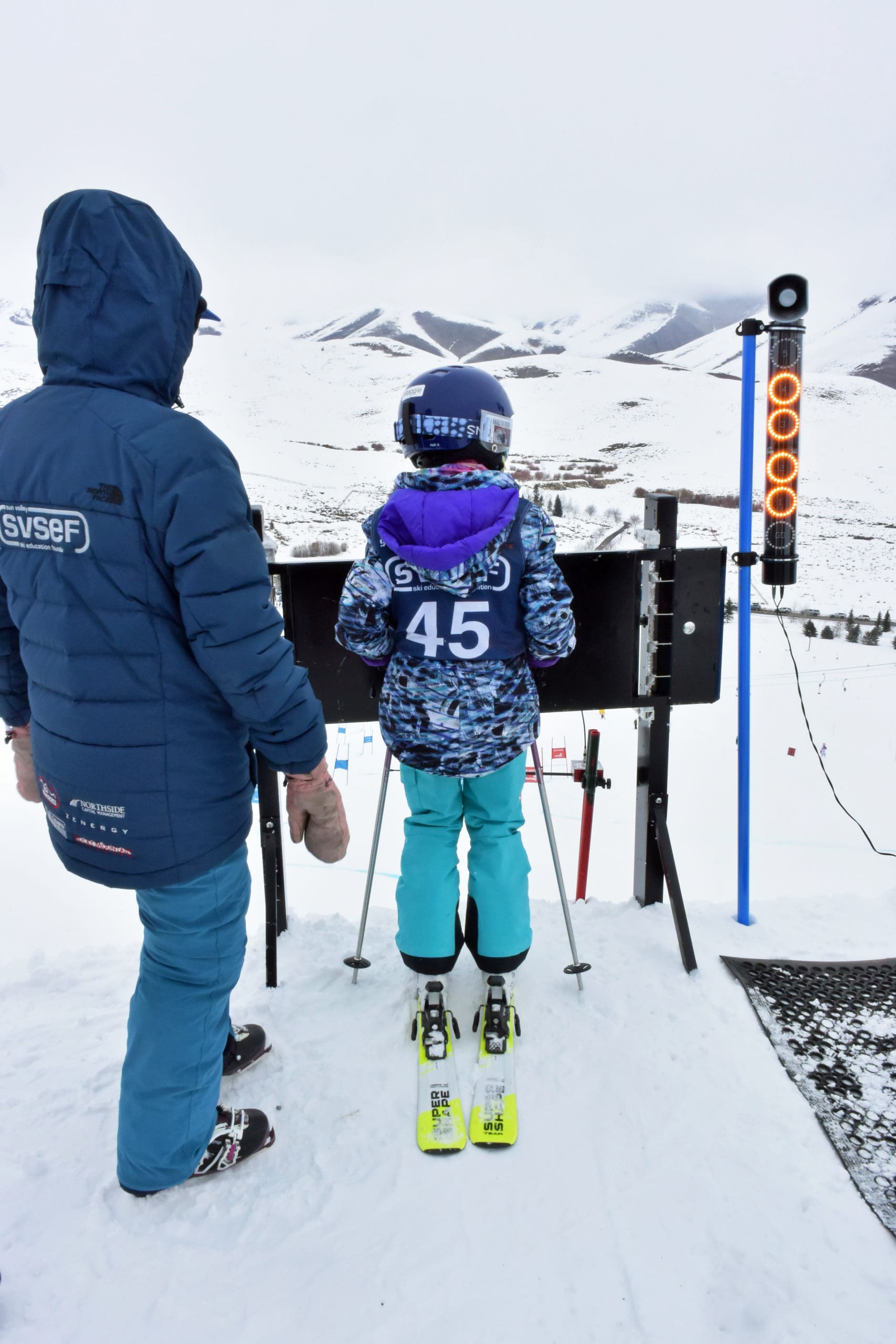
“The start gates added a whole other element. They keep everything running smoothly and on time. There’s no confusion among the kids on when to go depending on what we say. Plus, it gets the kids fired up. The kids are excited, and we are excited!” Alpine Program Director Will Brandenburg reported from the hill.
It is thanks to the generosity of the Bob Beattie Ski Foundation that SVSEF gets to heighten the Arkoosh Cup experience with this technology. Named for US coaching legend Bob Beattie, the Bob Beattie Ski Foundation mission is to “bring happiness through [its] work in skiing,” by making skiing fun and accessible to all athletes. One of the ways in which they execute this is through their advocacy on behalf of ‘pro-style’ racing.
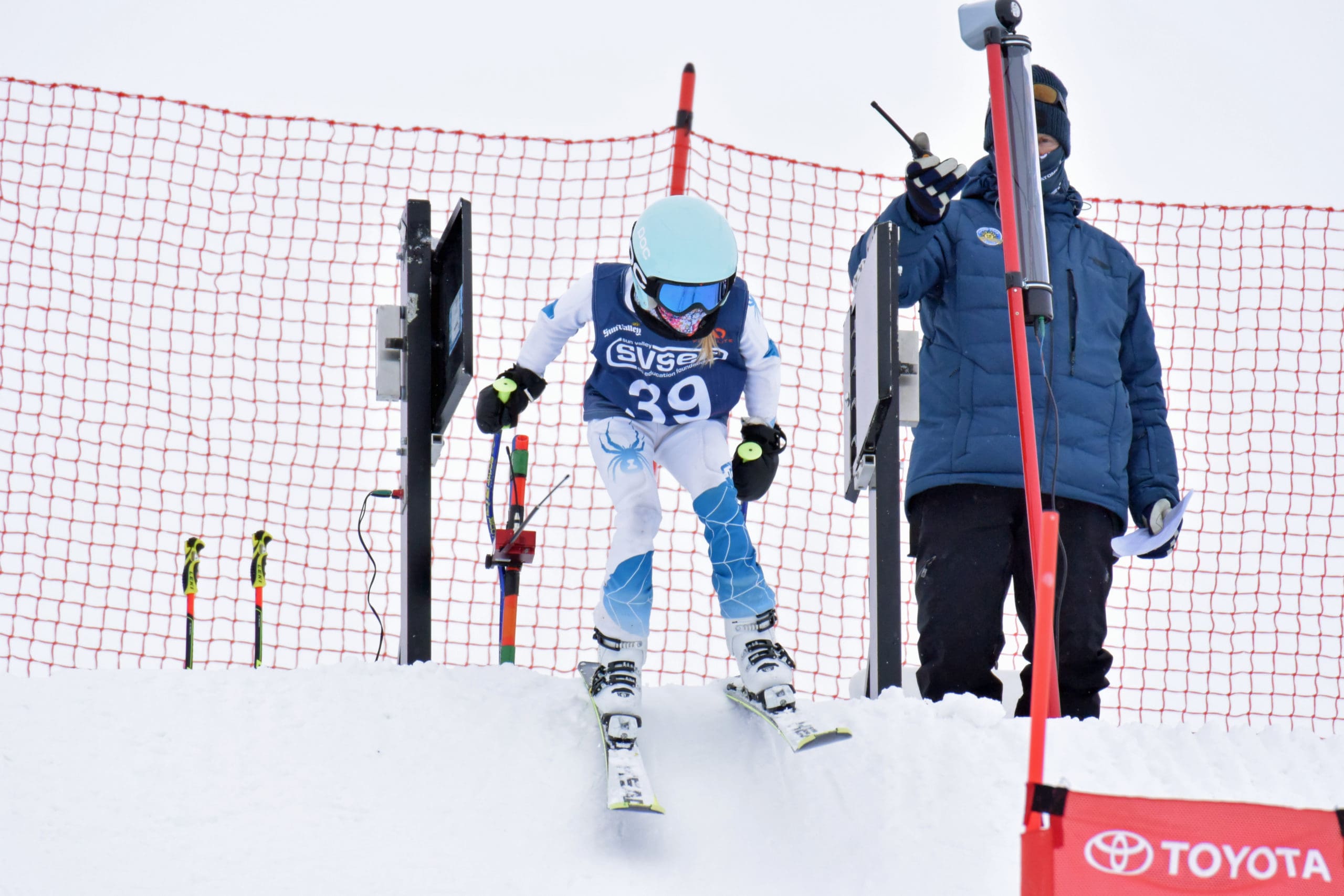
Beattie brought ‘pro-style’ racing to the center stage of professional skiing in the season of 1969-70—the same year as the first Arkoosh Cup—when he established the World Pro Skiing Tour. WPST was designed to capture the attention of viewers through the thrill-inducing, ‘pro-style’ dual format, which in turn would grow a larger ski racing fanbase in the US. The ultimate goal of the circuit was to give athletes a way to make a sustainable living off of ski racing professionally.
While it is the legacy of Beattie’s World Pro Skiing Tour that the Foundation looks to preserve, it is far from focused on the professional level alone; one of the Foundation’s central strategies to proliferate pro-style skiing in the US is to bring the event to young athletes.
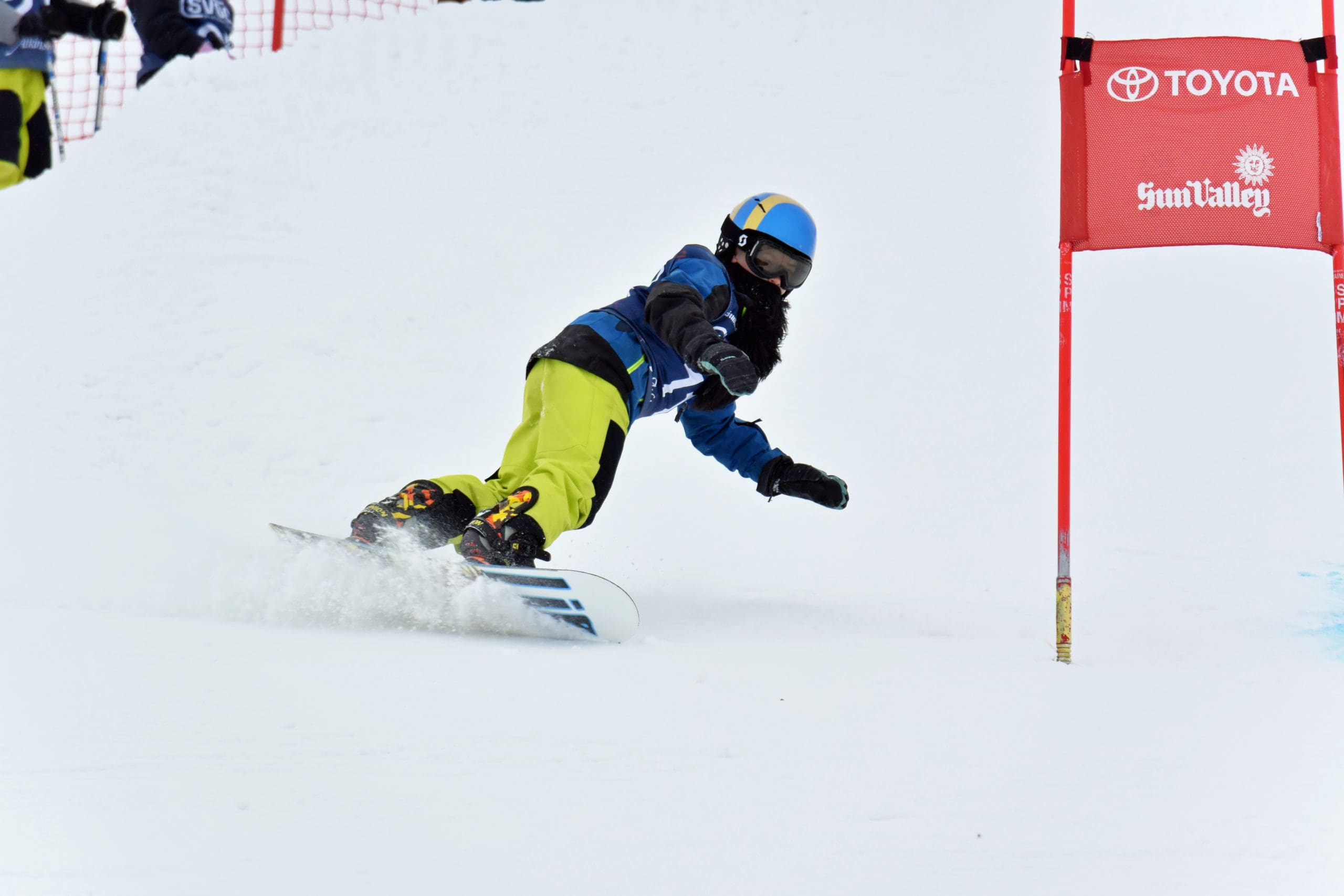
Of course, while any dual-style race taps into the thrill, it’s not fully authentic ‘pro-style’ without the racehorse start gates. “When you get put in a horse gate, you get pumped up. You go as fast as you can go. You’ve got to make sure you are sitting on your skis well, and that you’re in the zone as soon as those gates open.” Explains Terry Palmer, who in addition to working with the Bob Beattie Ski Foundation, is also an Olympian, ex-US Ski Team athlete, ex-World Pro Skiing Tour athlete, and of course, full-time Sun Valley local legend. “The dual format is meant to be fair, since you switch courses for each run. It always brings out good sportsmanship; you are able to go over to the person you beat and give them a high five, tell them, ‘next time you’ll get me, or I’ll get you.’”
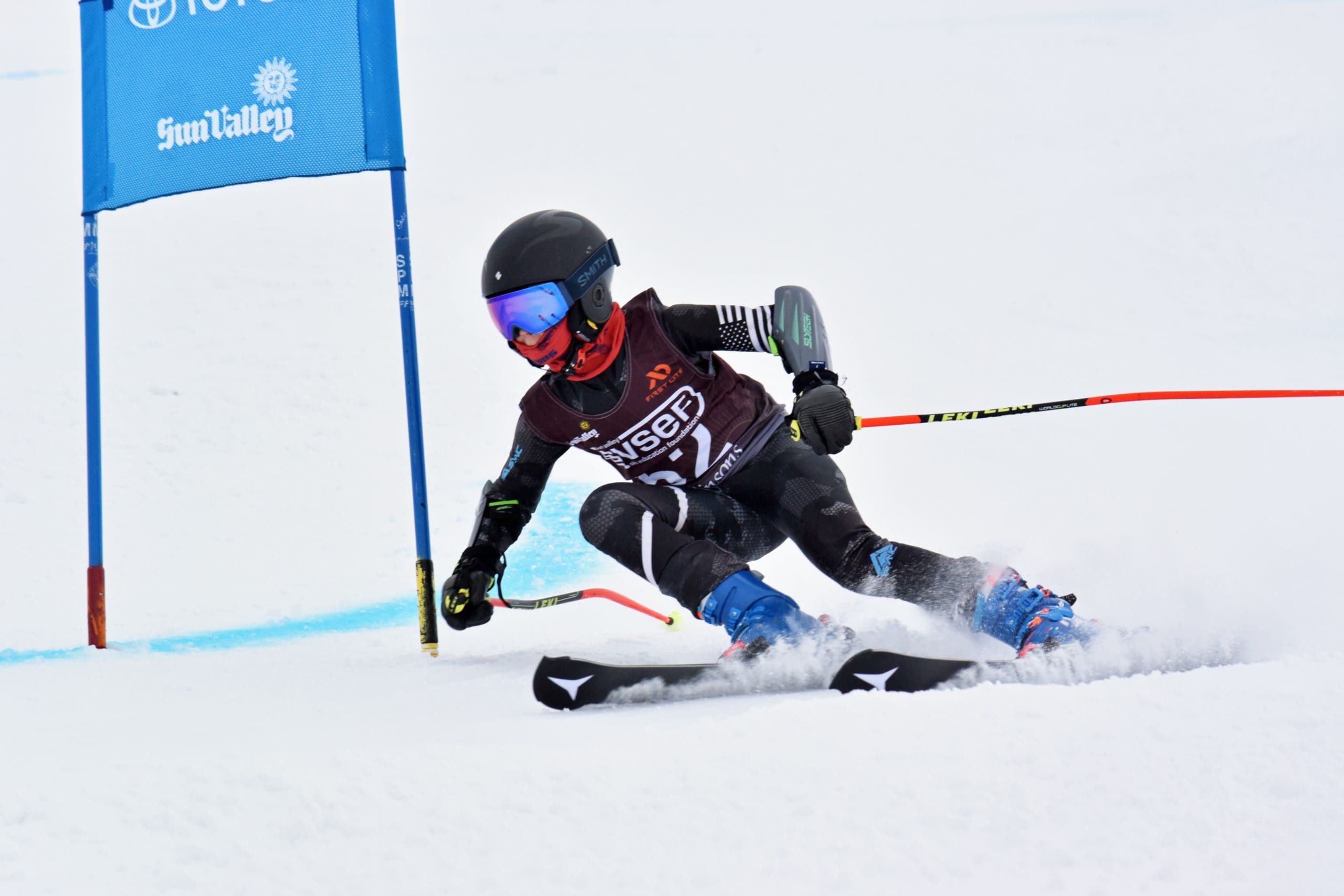
So is the spirit of pro-style racing: fiercely competitive and wholeheartedly playful, earnest and fair. It was that exact energy that hung in the air on Sunday. Kids who complained about being matched against a notoriously fast competitor always managed to find that extra gear needed to close the gap in the course; athletes went from competitive banter to wishing their competitors good luck before entering the start gate with them. There were equal parts friendliness to fire pent up behind those start gates, and there was plenty of both.
SVSEF would like to reiterate our gratitude to the Bob Beattie Ski Foundation for helping turn this year’s Arkoosh Cup up a notch with the donation of pro-style start gates. Congratulations to Conway Selznick and Fleur Brazil, this year’s overall winners of the Arkoosh Cup!
Results:
SNOWBOARD: 10 & Under, Women: 1. Vivian Smith. 10 & Under, Men: 1. Enzo Schmillen 2. Quin Enoch & Rylan Olson 3. Bolden Enoch 4. Cameron Cardella. 11 & Over, Women: 1. Callie Allen 2. Emma Lurie 3. Camille Armeen. 11 & Over, Men: 1. Charles Nelson 2. Miles Hatzenbuehler 3. Henry Georgiades
U8 WOMEN: 1. Lauren Larrabee 2. Téa Smither 3. Arielle Ries 4. Alta Questad 5. Katherine Morrison
U8 MEN: 1. Jasper Pollock 2. Logan Steel 3. Jack Kantor 4. Alex Grant 5. Jackson Hudyma
U10 WOMEN: 1. Savannah Pringle 2. Camille Reid 3. Taylor Rundell 4. Olivia Harrington 5. Jennings Fraser
U10 MEN: 1. Henry Questad 2. Corbin Flood 3. Cash Mintz 4. Coen Lamb 5. Dillon Wyman
U12 WOMEN: 1. Fleur Brazil 2. Sasha Preuss 3. Elliot Leahy 4. Skye Pringle 5. Skylar Jensen
U12 MEN: 1. Conway Selznick 2. Sawyer Morgan 3. Tommy Hovey 4. Wyatt Limburg 5. Harrison Black
Athletes of the Week
Athletes of the Week
February 14 2021
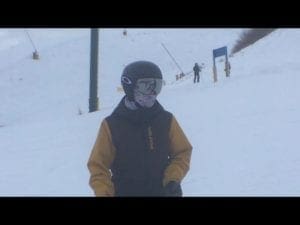
Karsen Miller
This week’s SVSEF Snowboarding athlete of the week comes to you from the Mini Shred Team.
Karsen Miller is new to the SVSEF this season but according to Mini Shred Head Coach “Danger” Dave. “Karsen has been grinding it out all season pushing himself in all areas of snowboarding. His fundamentals have really improved with his hard work. It has been noticed by his teammates, and his effort brings up the level at any practice he is at.I see him being in snowboarding for a long time.”
Great work Karsen keep up the hard work. - Coach Andy Gilbert
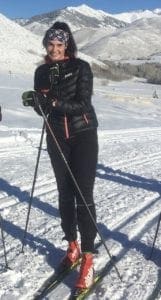
Aisley Grohusky
Aisley Grohusky is XC Comp Team’s Athlete of the Week. She will likely laugh and deny it- but Aisley has quietly become a leading force on our team. Aisley leads by example and it is rare for her to miss practice or an opportunity to race. It is even rarer if she isn’t laughing or at least smiling with her teammates during practice or around the hut. This is Aisley’s 2nd year with SVSEF and we are seeing Aisley’s hard work and positive attitude payoff in both her results this season and with her influence on the team. - Coach Ashley Knox
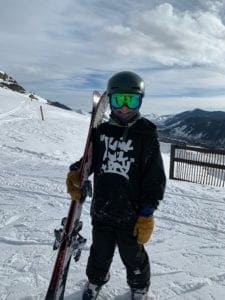
Emmett Christ
Emmett has been an exceptionally positive force on the squad this season. From tossing his first flat 360 off a nature feature side jump at Dollar to going thru the process of learning all 4 way 360s, his work ethic unmatched. We look forward to seeing where his skiing takes him in the future. - Coach Cassidy Dubois “Queso”
Athletes of the Week
Athletes of the Week
February 7 2021

Mabel Dietz
Mabel is on Baldy Devo and LASAR. She is a Good Person and a Great teammate. She has worked hard to improve her Skiing. We look for Mabel to do well as she continues her journey! - Coach Brian Caulkins
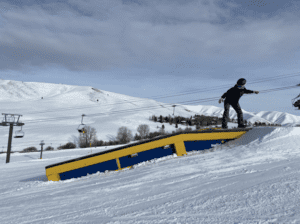
Camille Fox
Camille is a rookie Travel Team member who came to the program with only two seasons of snowboarding and no expectations other than taking her riding to a new level. She has done that in short order going from an eager good rider to a shredder who is comfortable on all terrain now.
Camille said it best to the coaches recently when asked how snowboarding was fitting into her life? She said, “Snowboarding was something I liked to do, now it’s like everything”!
Keep it up Camille your coaches and teammates are stoked you are here and on the progression your making! - Coach Andy Gilbert
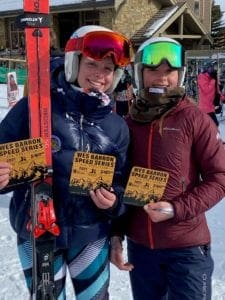
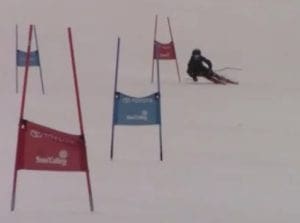
Noah Horsch & Meredith Bromley
Noah Horsch and Meredith Bromley have been selected to represent the USSA Team as Athletes of the Week! Both Noah and Meredith sustained major injuries in January which will keep them off the snow for some time. This was very unfortunate as both athletes are very committed to their sport, and we have been missing them out at training and at races! Meredith and Noah are both new to the team this year, but they have quickly become valued teammates to all. Though they encountered a set-back, their past efforts and improvements are not lost! They may have to take a break from skiing for a bit, but the opportunity to improve in other aspects of the sport can now take center stage! We wish Noah and Meredith well on their road to recovery! We are looking forward to having them back with the team in the future! - Coach Nate Schwing
Athletes of the week
Athletes of the week
January 29, 2021
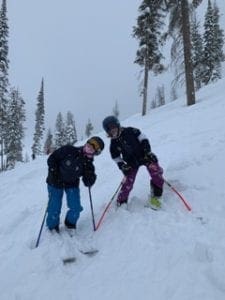
Abby Berner
Abby is new to the sport of ski racing, but that hasn’t held her back! She has made huge leaps in ability. She raced her first ski race ever last week, with nowhere to go but up! She pushes herself every day, whether its in a course or jumping a cat track on a powder day! Abby is also very supportive of her teammates, always maintaining a sunny disposition and a positive, yet fiery, attitude. We can’t wait to see what else is in store for her this year! - Coach Charlotte Gourlay
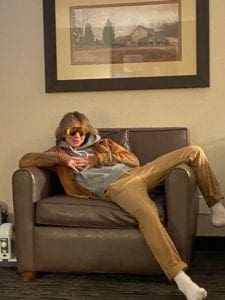
Nic Rubenstien
Over the past few weeks Nic has been working hard on fine tuning his competition runs and his hard work is really starting to pay off. Last week Nic set a new personal high score with a 63 which ended up putting him on the podium for his age group. -Coach John Grigsby

Eavan Brow
Eavan is a new skier on this team this year and has been just an awesome addition. Every day Eavan is just pumped to be at ski team and her energy for the sport is both palpable and contagious, you can’t be on the trails with Eavan and not become stoked to be there. Learning a new sport, specifically XC skiing can be a very difficult and frustrating endeavor but somehow for Eavan it has only been a great adventure, every day she rises to the challenges we put in front of her, pushing herself and her teammates to be better. It doesn’t matter if we are logging kms, learning technique, playing games or doing intervals, Eavan is always smiling and encouraging herself and her teammates to continue on. I have seen her ski along side a teammate during and interval workout; totally out of breath, pushing herself to her limits and still find the energy to cheer for her teammate. She is such an important addition and our team this year wouldn’t be complete without her! - Coach Kelley Sinnott
From the start gate to the finish line: a week with the Alpine program
From the start gate to the finish line: a week with the Alpine program
With the holiday season in the rearview mirror and the thick of competition season picking up, SVSEF Alpine teams find themselves in the heat of athletic programming. Merely following them around for a week—let alone actually training—is exhausting work. So, we followed them around for you.
We’ll start off by heading to Rotarun for some weekday training. From 3 P.M. to 5 P.M., you can find Mini World Cup, North Series, and the IMD team training on the ‘little ski hill with a big heart.’ With North/South-split training, these teams alternate between Rotarun days spent skiing together, and Baldy days, where teams conduct more isolated training.
On Rotarun, the flow of athletes up and down the hill is constant; at any given time, an athlete is either on the slope or watching teammates from the poma lift. The only real moment of stillness is that spent listening to a coach’s advice. The minimal turn-around time keeps athletes engaged, and steady repetition creates tighter feedback loops between the coach, the athlete, and the athlete’s skiing.
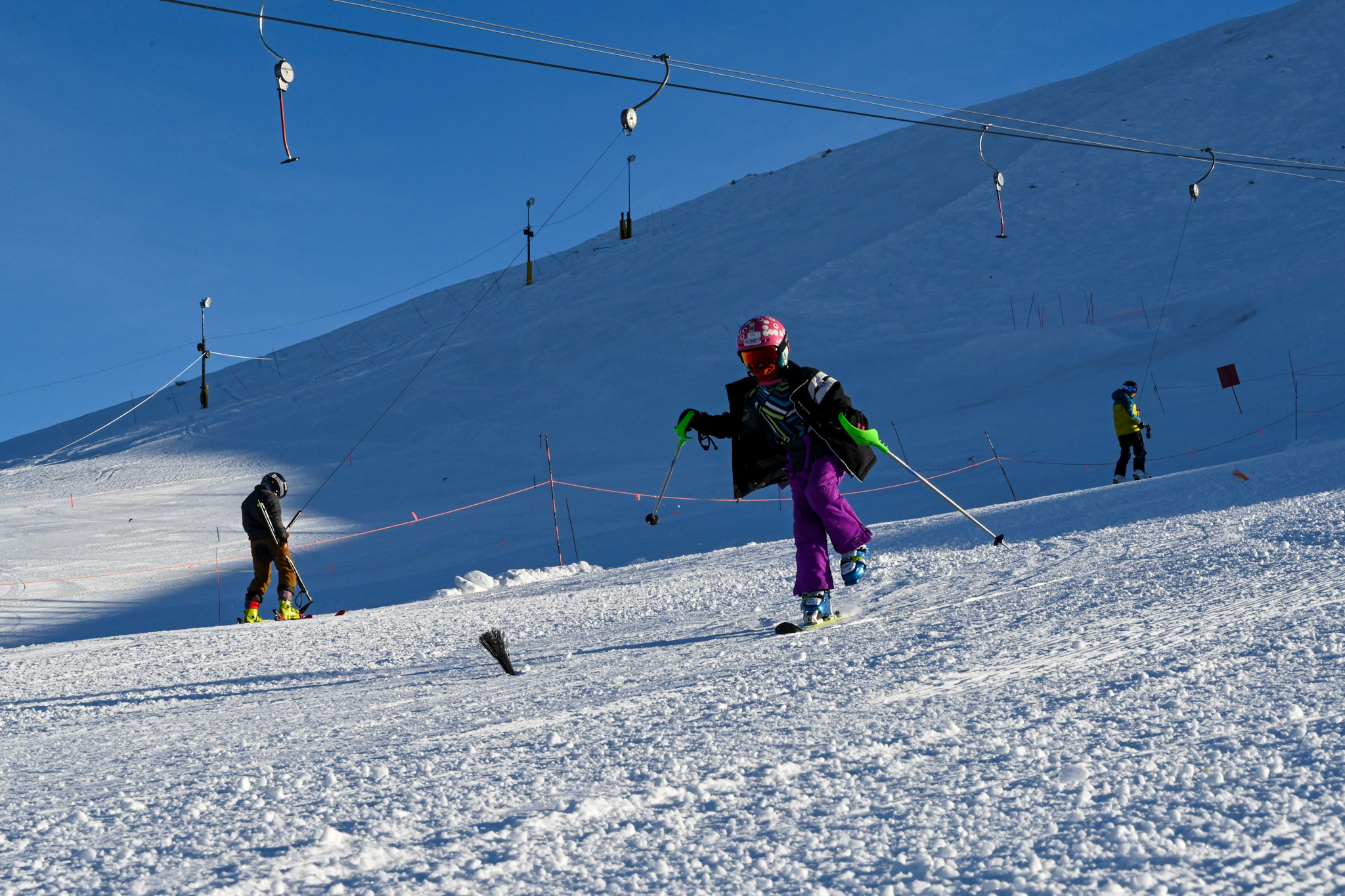
The athletes show off the comprehensive benefits of this fast-paced repetition as they execute drills. They are charged with one-skiing a small course of brushes—commonly called carrots—on just enough of a fall-away slope to challenge their natural balance. While there were plenty of blowouts, there was a steady determination among athletes, and a tangible increase in comfort with each lap. Over time the athletes even manage to master the single-ski poma ride, something the 23-year-old lifetime skier and author of this post would hardly think to attempt.
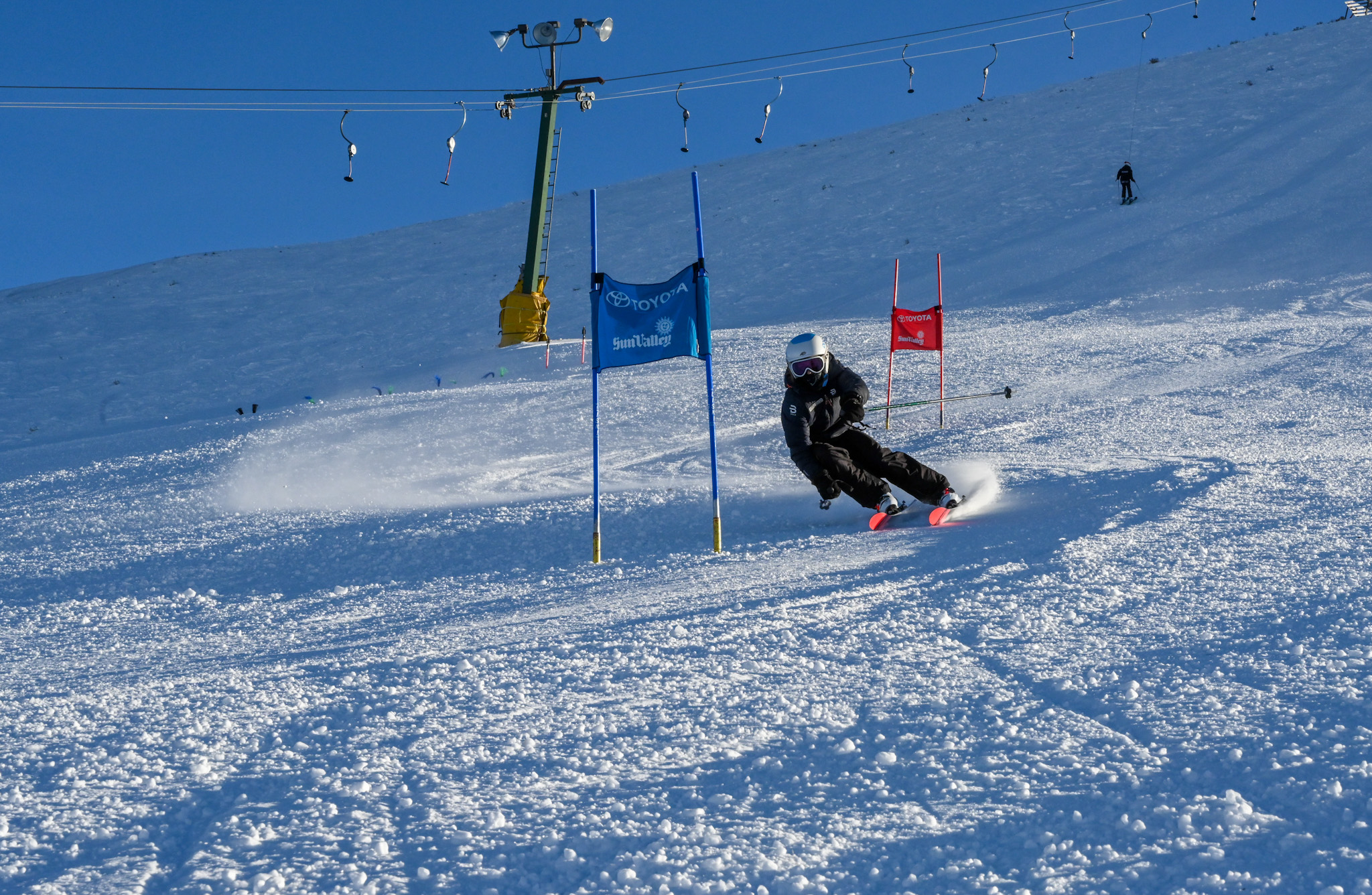
Other athletes, meanwhile, run a GS on Rotarun’s main face. In addition to thinking critically about their own performance, athletes are encouraged to watch one another. Coaches occasionally pull individuals aside to watch their teammates ski and quiz them on the nature of the lines taken: are they high and conservative, or tight and aggressive? This exercise trains athletes to hold an essential question in mind: what can I learn from everyone around me, regardless of skill level relative to mine?

As the sun begins to tuck itself behind Rotarun’s peak, coaches pull the GS course in favor of a panel slalom, closing out the day with some light-hearted, head-to-head competition. While the coaches change out the course, athletes entertain themselves by throwing the biggest spread eagles they can, wherever they can.
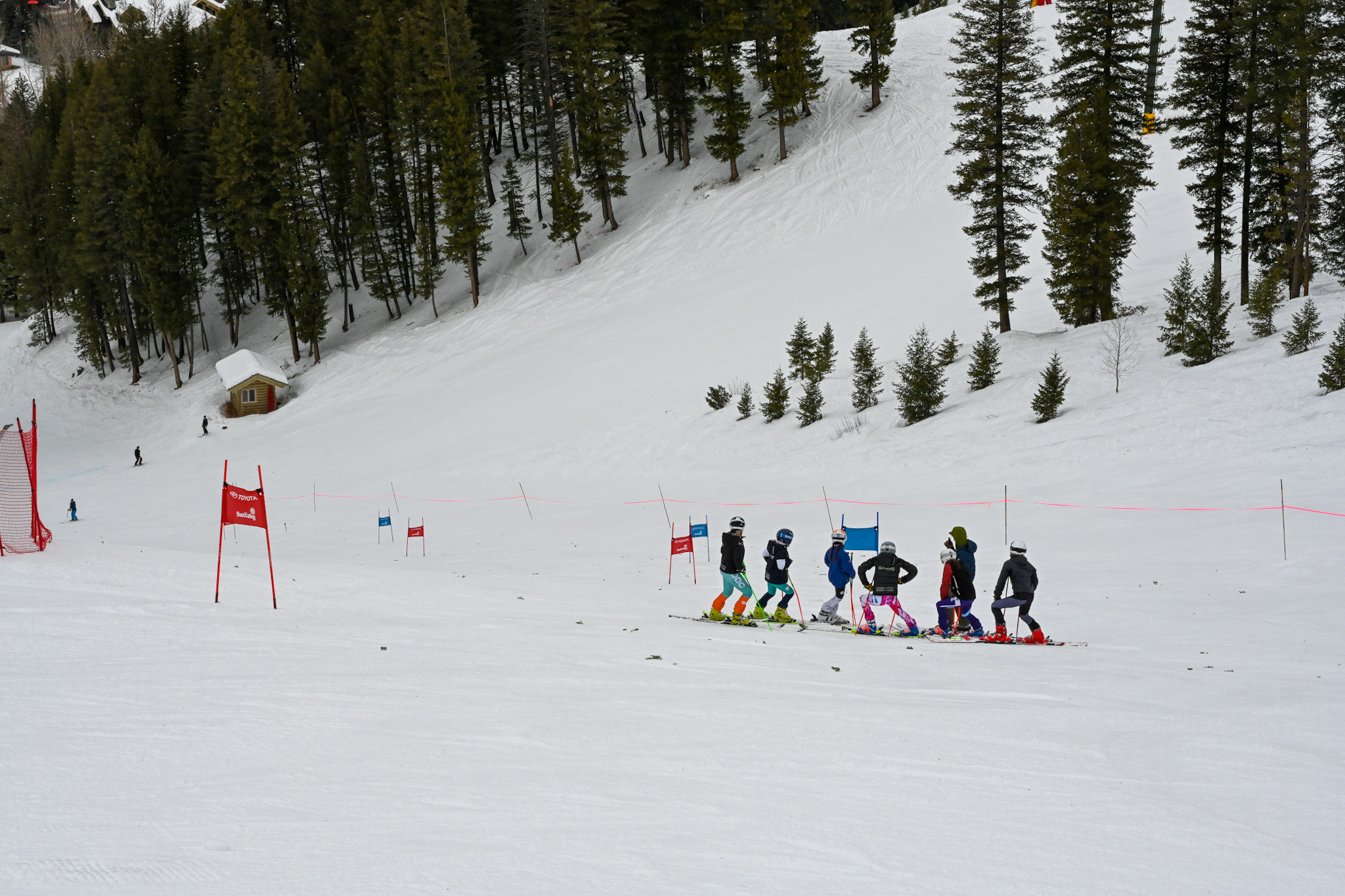
Come the weekend, we’ll catch the Intermountain Division team on Baldy. They train Hemingway-into-Grayhawk, preparing for home race to be set in the same spot the upcoming weekend. The coaches create the best environment they can to place these athletes in a competition headspace. They set up a timing kit, which not only arms athletes with reference points for performance run-to-run, but also re-acquaints them with the race-day pressure of being under the clock. Coaches take nearly forty-five minutes to inspect with athletes, pointing out tricky turns and key locations to generate speed. Finally, they send the athletes down in racesuits and bibs. For two hours, the athletes receive the opportunity to train in a mock-race setting.

The end of the weekend returns us to Rotarun for the final Pastry Cup of the season. In a year that traditional competition opportunities are far-and-in-between, the Pastry Cup gives North Series athletes an additional opportunity to practice getting into the competitive zone... With some sugar mixed in. What better a way to motivate young athletes than delicious baked goods for prizes?
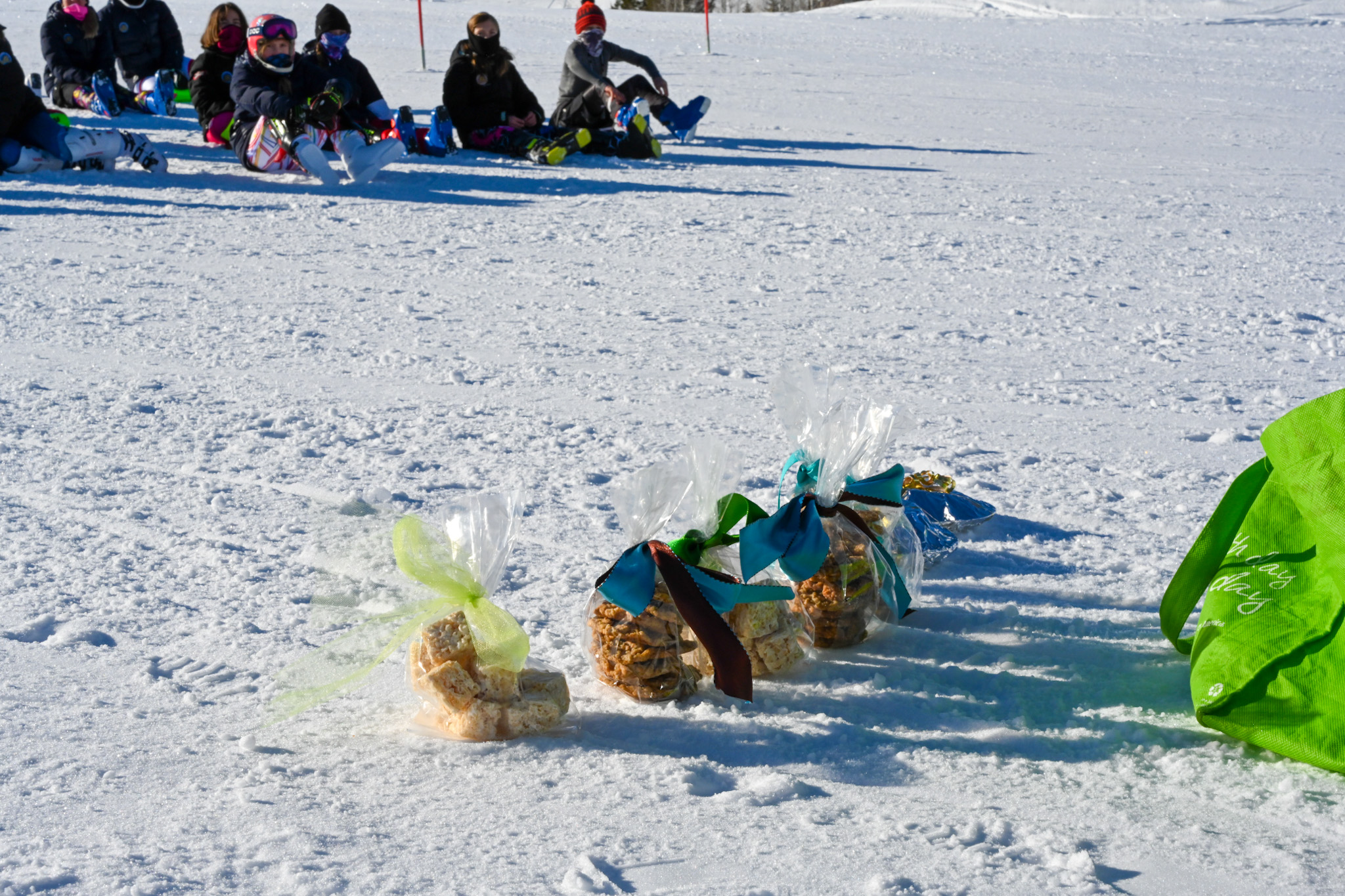
The racers compete in a dual slalom, facing off in tense head-to-head matches. Lynyrd Skynyrd's Free Bird blasts from speakers at the base of the poma lift, the sun beams down on Rotarun’s slopes, spectators keep an appropriate distance from one another and enjoy the racing from smoldering fire pits aside the parking lot. With the laughter, light, and music, it’s the sort of morning that almost feels as if it could exist outside the pandemic.

By lunch time, coaches hold awards, announcing the top three female finishes and top three male finishes. Each top finisher gets their choice of coach-baked goodies: rice krispy treats, chocolate chip cookies, chocolate cake. However, while those who make the podium get first choice, every athlete still gets a small taste of victory: enough pieces are made of each treat as to make sure all members of the get a taste. A word of advice: don’t catch yourself standing amid the athletes when the award ceremony concludes, unless you’re ready to run the stampede of ski boots around you as the victors share their spoils.

While there’s no guarantee of normalcy this season, the Alpine program pushes forward with this sort of programming: drilling in muscle memory, encouraging critical thought about one’s skiing, re-creating the competitive environment, and of course, keeping things engaging and fun. "At the end of the day, the goal is progression." Alpine Program director Will Brandenburg explains. "The staff is asked to build their programming to be season-wide, targeted at long term development of an athlete's skiing. There's a method to all these moving parts, and the whole goal is developing programming that can continually help athletes progress day-to-day, month-to-month, year-to-year."
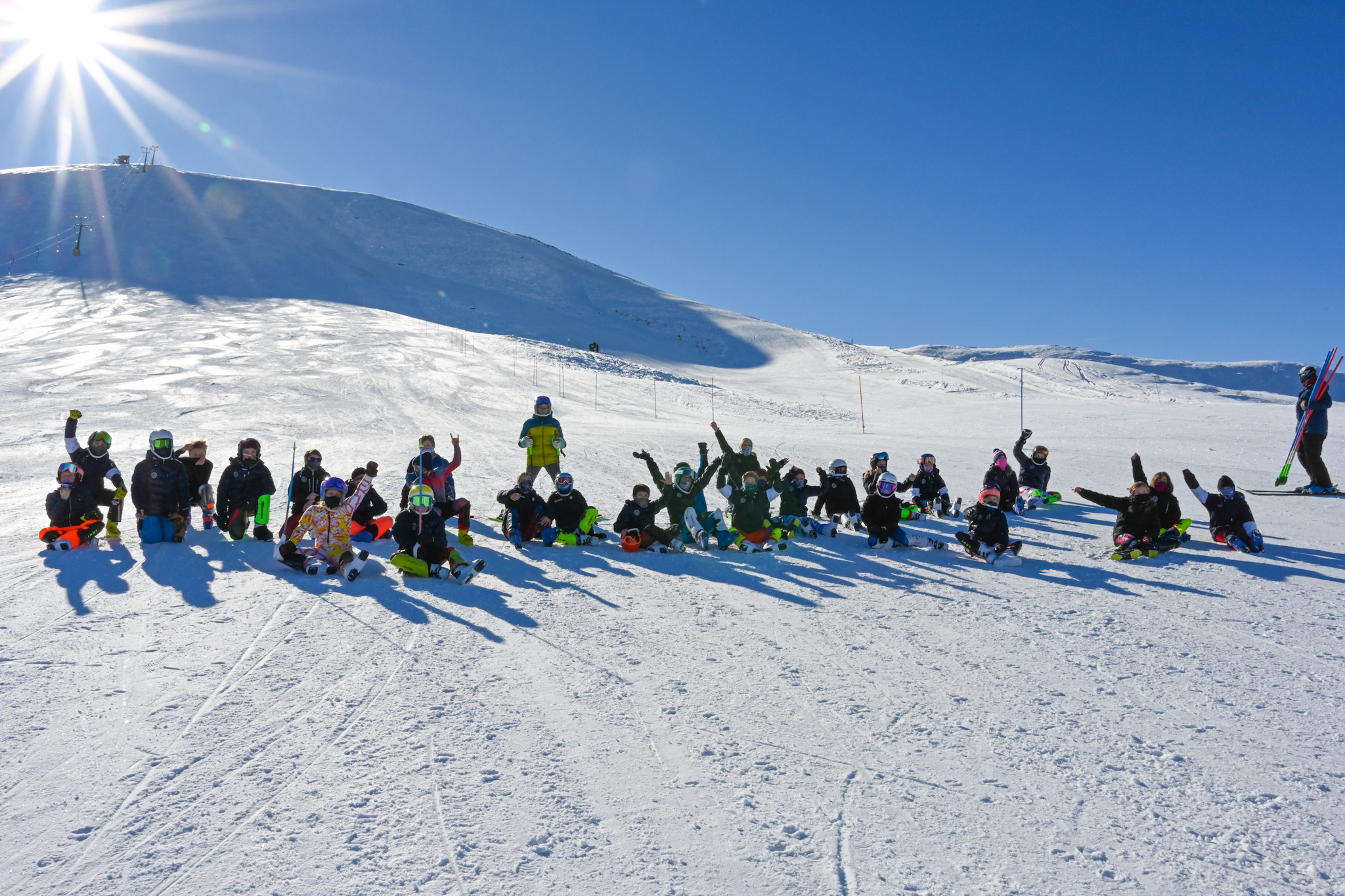
"We build programming that gives the athletes the proper steps to progress; races serve as tests of this progression." Brandenburg continues. One such testing opportunity was this last weekend, with nine total races held across age groups, locations and disciplines. By-and-large, SVSEF athletes scored big. In Grand Targhee, SVSEF U12 boys made up half of the top ten finishers, two of which were on the podium. In races split between Baldy and Rotarun, SVSEF athletes across genders took 5 out of the 6 first-place finishes. Across the weekend's events, SVSEF alpine racers secured 14 podium spots out of 33 total opportunities. However, it's not the impressive finishes that pose a testimony to the hours of programming: it's the scale of progression across the field.
"Ninety-five percent of the kids are getting better, the whole program is moving forward." Brandenburg adds. The results demonstrate this too: SVSEF athletes are almost entirely concentrated toward the front half of the field. "If you were to call the head coaches today, they would be like 'yeah, I really don’t care about the results. We do care, we care as far as the team is moving forward, and that the individuals are getting better at skiing, but not about how we are doing in reference to everyone else.' Across our coaching staff, they aren’t putting pressure on the kids to ski fast, rather, they are teaching and challenging the kids to ski better." Brandenburg continues. As he views it, "when you, as an athlete, don’t feel your getting better and progressing, it’s really hard to be motivated to continue to work hard." At the end of the day, it's about loving what you do, and loving the hard work it takes. When hard work begets progress, it's a lot easier for that love of skiing to flourish.
As Brandenburg explains, "I think that’s part of the reason everyone is doing well."
Freeski athletes go head-to-head in the game of SAUCE
Freeski athletes go head-to-head in the game of SAUCE
While competition schedules won’t be looking the same for a while, the SVSEF Freeski teams made up for the season’s lack of contest over the weekend with a heated game of SAUCE.
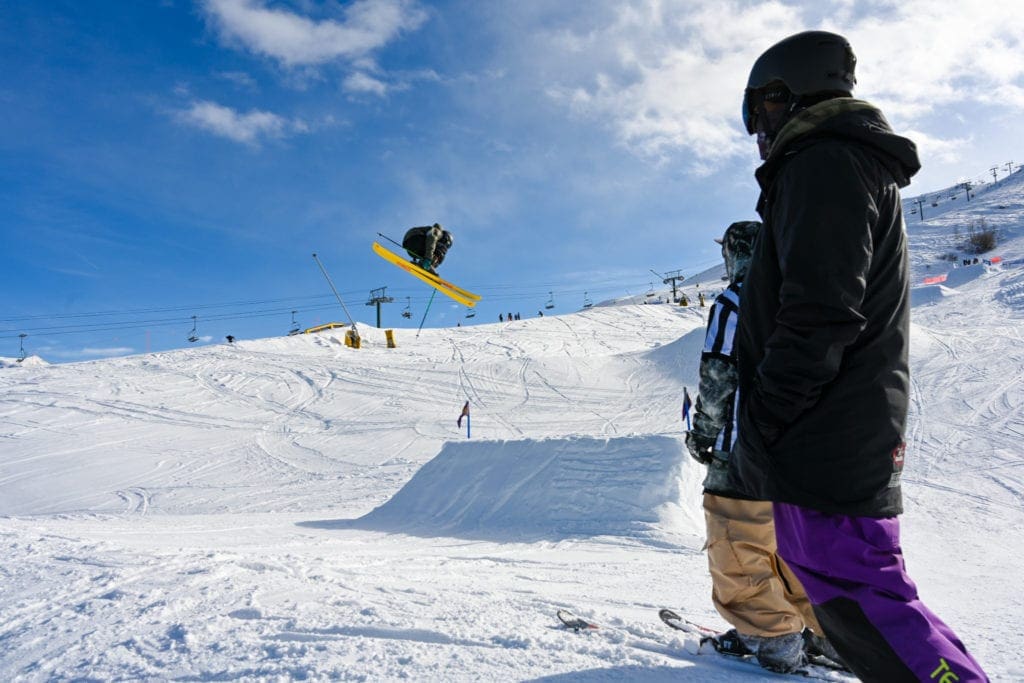
What is SAUCE? You might be familiar with the popular game of H.O.R.S.E in Basketball, or S.K.A.T.E on skateboards. Just like the former, then, SAUCE takes place head-to-head. Between two athletes, the winner of rock-paper scissors sets a trick or a series of tricks. If athlete no. 1 (the winner of rock-paper-scissors) makes the tricks they’ve called, athlete no. 2 must also execute the trick(s). If athlete no. 2 succeeds, athlete no. 1 calls out the next trick and the game continues. If athlete no. 2 misses the trick, however, they get a letter (in this instance, ‘S’ for SAUCE). If athlete one sets a trick and doesn’t execute it, athlete no. 2 becomes the leader and gets to call the trick. The first to make is to ‘SAUCE’ (missing five tricks) loses.
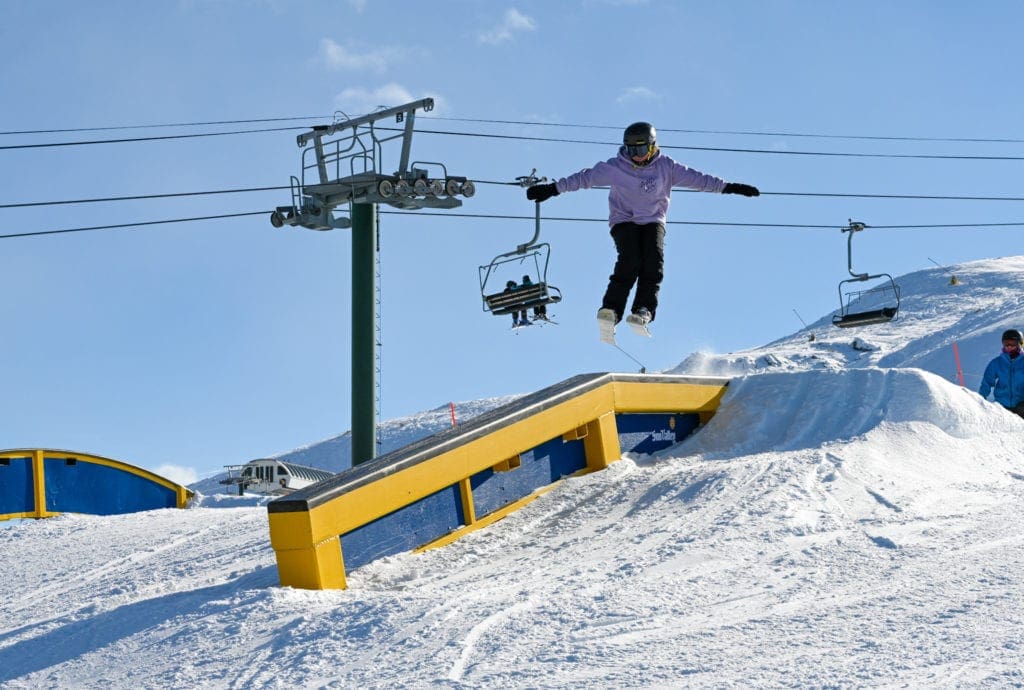
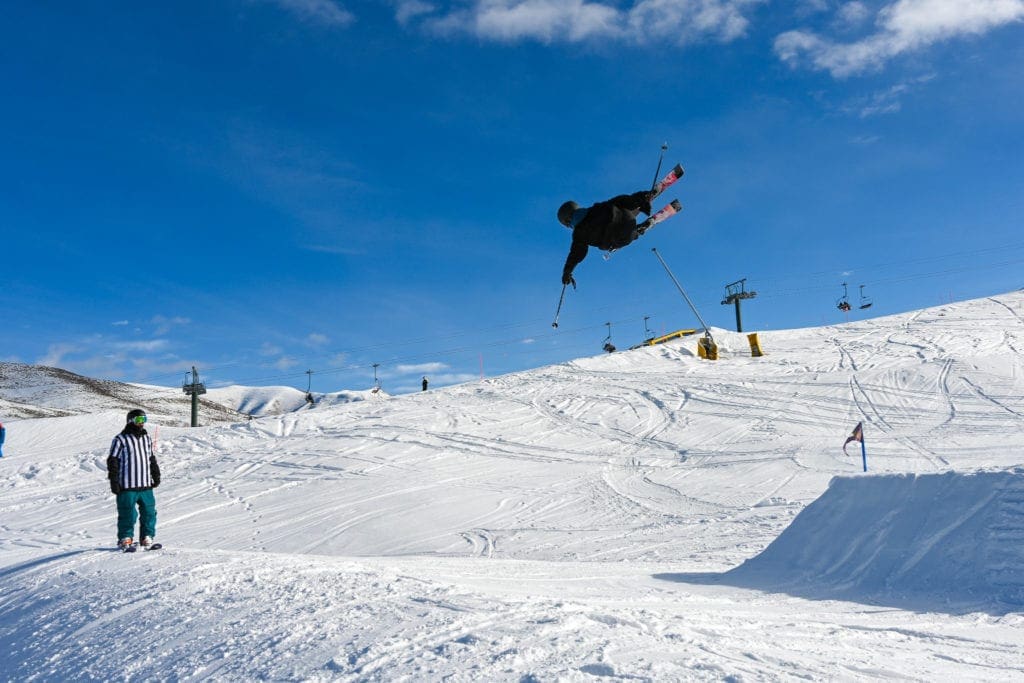
The Freeski teams adapted ‘SAUCE’ from professional skier Matt Walker and Olympic Gold Medalist Joss Christensen’s game of ‘SLVSH,’ which follows the same rules. The game of ‘SAUCE’ not only draws inspiration from directly from these elite athletes, but also shares in these athletes’ interest in demonstrating just how nuanced and complex competing in slopestyle skiing truly is. For a 2014 article in Powder Magazine, Walker explains how the challenge of the sport transcends beyond who can throw the biggest, most elaborate trick: “at some point there will be a ceiling that has to be reached on how much physically a skier can flip and twist. It’ll get boring.” Walker continues, “You don’t need judges to tell you how hard a trick is. How hard a trick is for me is not the same as how hard a trick is for Joss... It doesn’t matter if it’s a triple cork or a 360. If it’s hard and someone else can’t do it, then it’s hard.”
The game of ‘SAUCE,’ like SLVSH, looks to tap in to the natural, intricate dynamics of competition between two athletes; the subsequent highly-specific and ever-changing rivalries born out of the game begin to invoke some of that mid-competition nerve that might otherwise be lacking this season. Freeski Head Coach Tyler Conway explains: “It works on their competition mindset. It gets the heart rate going, gets that adrenaline pumping, and gets kids to learn how to focus that energy. A lot of times during these games, you start to learn new tricks. At competitions kids tend to push it, because energy is up. So, they learn new tricks, but also learn to control that adrenaline, use it in the right way and not burn themselves out.”
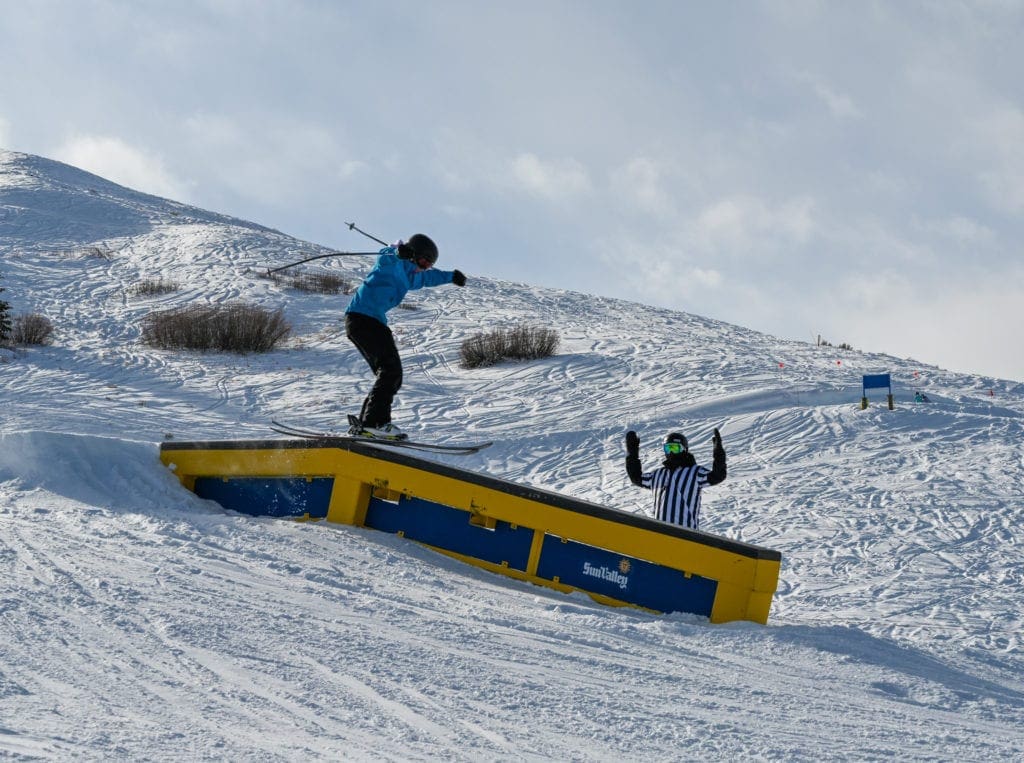
There is hardly a more ideal venue to not only invigorate, but practice and refine this competition mindset than Dollar mountain. A ride to the top of Dollar takes just over three minutes and accesses 628 vertical feet of terrain, allowing athletes to maintain a competition mindset with little interruption and plenty of repetition.
The combination of rapid repetition and head-to-head competition provide an excellent opportunity for young athletes to engage with the nature of Freeskiing itself, a sport that’s largely lead by instant-to-instant athlete innovation and defined by the corresponding rapid evolution.
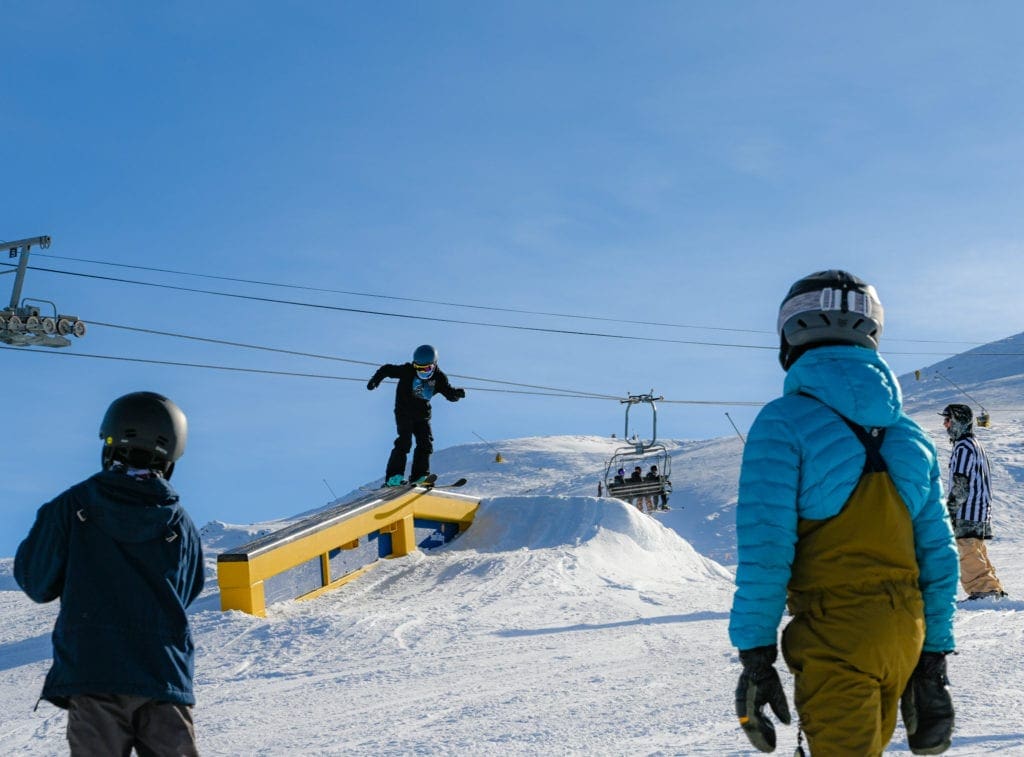
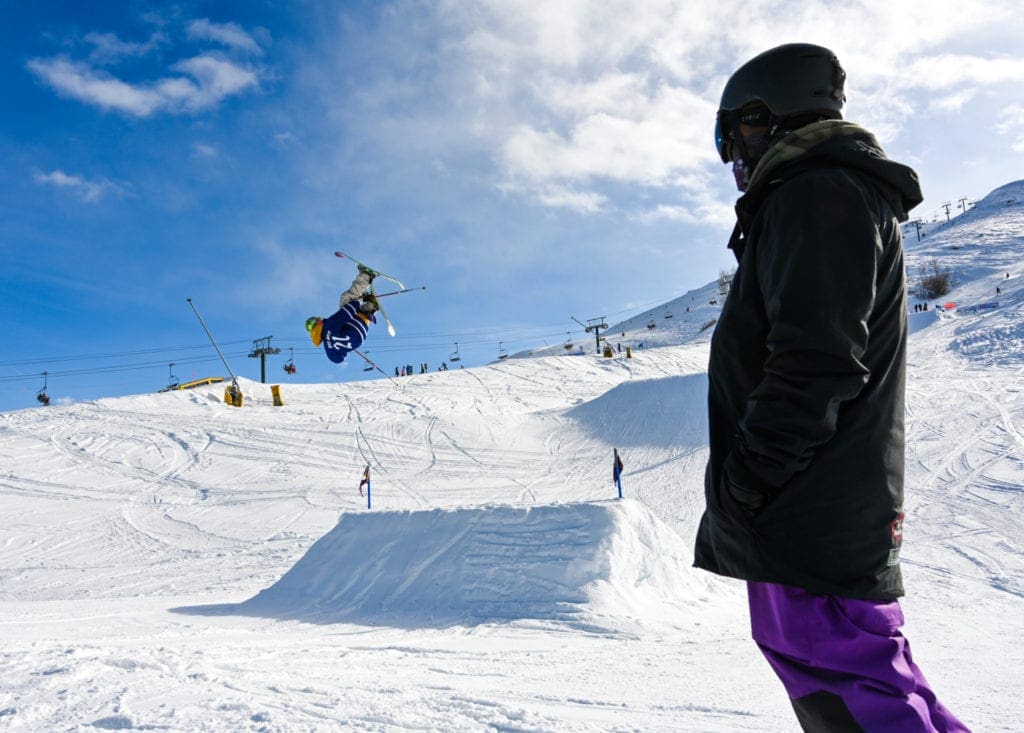
Beyond the training value, however, the event is plain and simple fun. To hear the joy in the whoops and hollers of onlooking teammates and coaches when an athlete lands a challenging trick is something special; not only does it capture the attention of most of the mountain, but everyone in earshot can’t help but get fired up for the kid too.
The game of SAUCE continues this week to establish a winner among the finalists. However, Freeski athletes will get the chance to compete for the title of SAUCE champion again in February and March, as the teams continue to deal with a consistently shifting competition schedule.
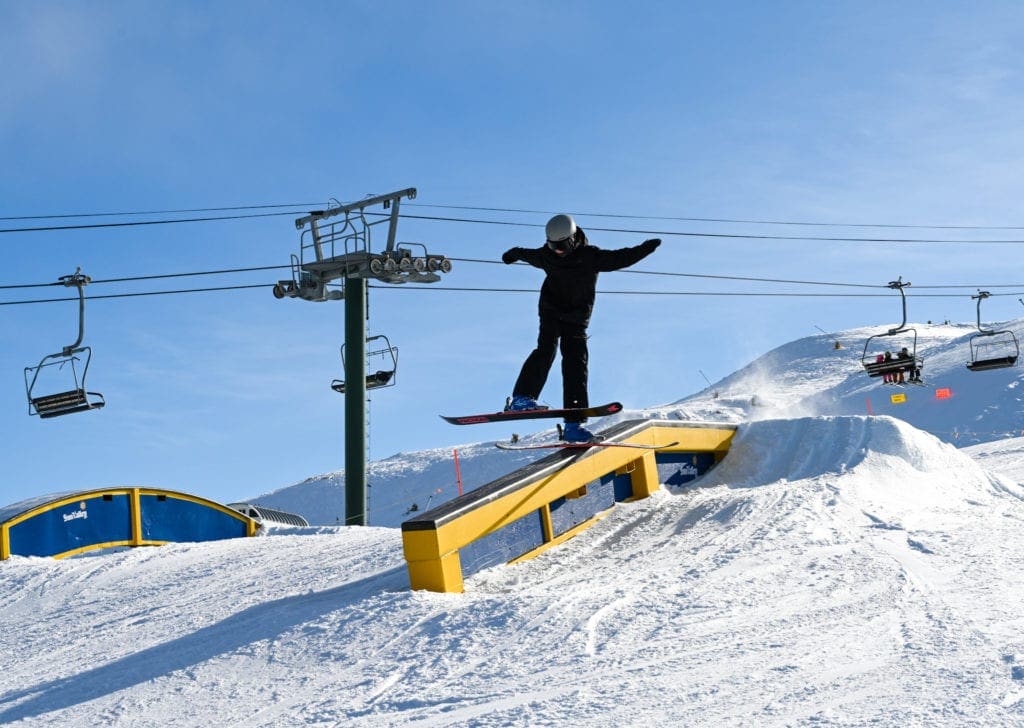
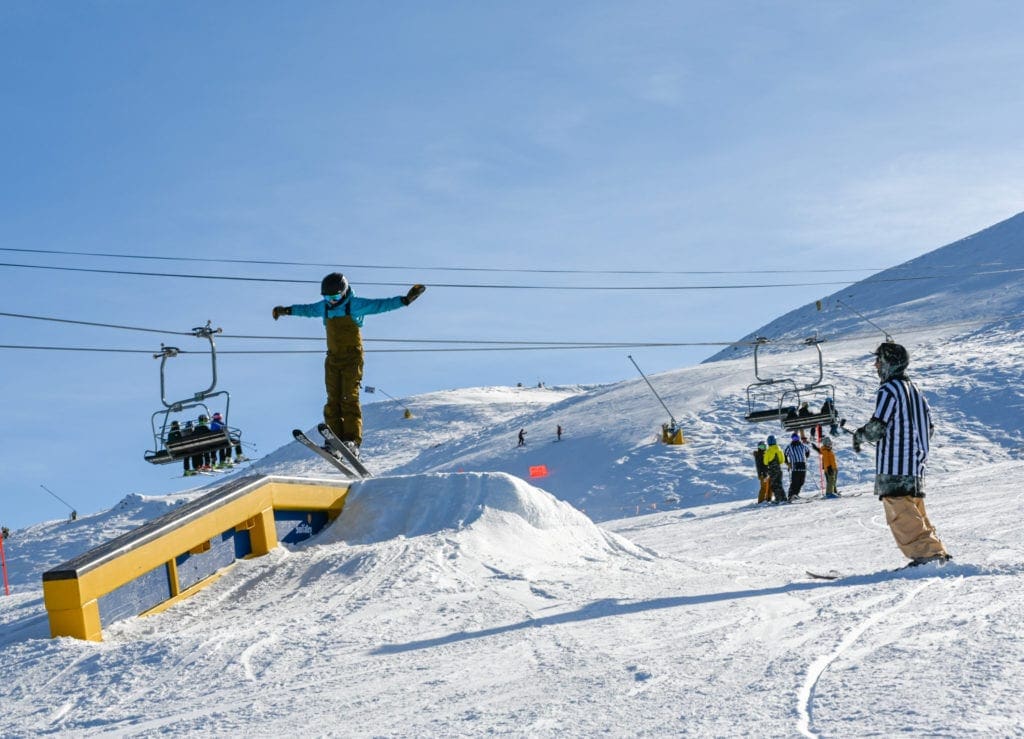
Caleb Baukol Memorial Safety Fund
Initiation of the Caleb Baukol Memorial Safety Fund
We are honored, excited and grateful to announce the initiation of the Caleb Baukol Memorial Safety Fund. In memoriam of the widely adored, local-legend Caleb Baukol, the fund aims to deliver the highest quality safety materials, training and systems to SVSEF for the protection of our athletes.
The idea to create a safety fund began to take shape with the implementation of a top-tier radio communications system on Baldy. Through the vision of Sean Tajkowski—the architect of this initiative—and generosity of Caleb’s life partner, Bex Wilkinson, SVSEF was able to install a radio repeater at the top of the Greyhawk chair and supply several top-of-the-line radios to coaching staff.
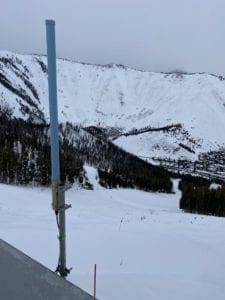
The system currently installed—through Wilkinson’s support and Tajkowski’s vision—is among the leading radio communications systems in the country, akin to those used by the Olympics, Formula One racing, and the America’s Cup. A system of this caliber not only allows SVSEF to overcome any and all communication gaps, but sets the program ahead of any other youth program in regards to quality of communications and subsequent influence over athlete safety.
While the effort to install the radio system began in 2018, it was not until this season that the funds were acquired to complete the purchase of sufficient radios for all SVSEF operations. With the final pieces in place on the communications end, the project’s visionaries—Bex Wilkinson and Sean Tajkowski—saw the opportunity to make the installation of proactive safety measures a permanent fixture of ski team operations, by creating a fund dedicated exclusively to risk mitigation. In the immediate future, resources from the fund will be going forward to Stop the Bleed kits and comprehensive training in immediate injury response for SVSEF coaches. Tajkowski, working in dialogue with local first-responders, identifies these as the next crucial steps in assuring the highest availability of emergency care to our athletes.
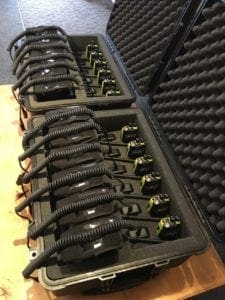
While Wilkinson has no present connection to SVSEF—her children have since grown out of the program—she decided to underwrite this initiative in recognition of SVSEF’s importance to the Wood River Valley community. "The Sun Valley Ski Education Foundation is the backbone of our community as a whole. After realizing the safety needs of this wonderful organization, I felt that it was not only needed, but was paramount that these safety measures be implemented for the welfare of our children, our staff and our peace of mind as a community." Wilkinson plains.
SVSEF Executive Director, Scott McGrew, reiterates the importance of creating this fund as it relates to bringing athlete safety before the public eye: “athlete safety is our top priority, but often does not have quite as much visibility with the greater community as compared to the achievements of the program. The community needs to see how important this internal gearing of the system is, especially in regards to athlete safety.” McGrew explains. “This is our proactive approach to athlete safety.”
The fund is to be designated in memory of Caleb Baukol, who was no stranger to bolstering community through the sport of skiing. Caleb—a master of playing in the mountains—was born in Colorado, raised in Montana, skied and fished in Alaska, and spent over two decades in the Wood River Valley. While living in the Wood River Valley, Caleb co-owned and operated 5B Garage, a private ski-tuning club in Ketchum, which also housed Big Wood Ski, Baukol’s custom hardwood ski manufacturing shop. While heralded as a hot spot for skiing aficionados, 5B Garage and Big Wood Ski served a far higher purpose than equipment infatuation; they were intended to create a space for gathering, for community. Caleb understood the essential role of skiing in tightly-knit social fabric of the Wood River Valley.
“His life was all about skiing.” Wilkinson adds. “[the shop] was a place where people could hang out and enjoy the ski life, and I know his presence is missed. He taught me how to ski, and he was all about putting smiles on your face. He just wanted you to get on the mountain and enjoy it.” It is in the interest of protecting this community, that Caleb so loved, that the fund is named in his honor.
SVSEF would like to reiterate our gratitude to Sean Tajkowski and Bex Wilkinson. To donate to the Caleb Baukol Memorial fund, please contact Mimi Crocker.
XC Program Director Rick Kapala featured on Toko Podcast
XC Program Director Rick Kapala featured on Toko Podcast
SVSEF's own Rick Kapala takes the spotlight in an episode of Toko's US Nordic Personality Series podcast.
Kapala, who has been with SVSEF for 33 years, has three times been awarded the title of USSA's Cross Country "Coach of the Year," has coached internationally, and has overseen regular qualification of top athletes to the US Junior World Championship team. As anyone who knows Rick would know, however, these achievements compose only a few drops in the bucket of Rick's overall, tremendous contributions to the sport of Cross Country skiing in the U.S.
Tune in to the podcast here or watch the interview below:
